




03 Feral Citizen On the eastern tiger swallowtail butterfly and the urban forest

05 Joravsky | Politics The ideal motto for the Reader: “Kicking ass since 1971.”
06 Isaacs | Culture Forget the south or west side: the privately owned Chicago casino is likely going downtown.
08 People-Powered How can we hold our alderperson accountable in between elections? Reimagine the Chicago Machine with City Bureau’s accountability activities.
10 Restaurant Review A Fulton Galley newcomer fills a Thai food void in the West Loop.
13 Profile ‘This, too, is Torah,’ says Twitter rabbi Danya Ruttenberg.

16 Visual Art Some of the best entertainment in the city this week is an automata auction.
17 Comedy Argentina’s Eliana La Casa hosts the first all-Spanish showcase at Chicago Women’s Funny Festival.
18 Dance Joanna Furnans contemplates the minute in her new autobiographical solo, Doing Fine.
18 Review Red Tape Theatre’s new staging of All Quiet on the Western Front has some weak spots, but makes the story feel universal.
20 Plays of note Mixtape offers an improvised one-act drama with music, Out of Love captures the tenderness and grit of female friendships, and The Hunchback of Notre Dame is a monster made of saccharine.
21 Movies Hollywood turns A er the Wedding into something smooth, glossy, and bland; Old Boyfriends is still Joan Tewkesbury’s one and only feature.
31 Movies of note For Sama is one of the most stirring documentaries about war in the 21st century, The Peanut Butter Falcon handles developmental disability with care, and World City in Its Teens is a gem of the silent cinema.
36 Feature Open the Circle teaches footwork because footwork saves lives.
41 In Rotation Current musical obsessions of Clay Frankel of Twin Peaks, Pitch Perfect publicist Jacob Daneman, and more
42 Shows of note Hide, PearlFest, Rosie Flores, and more this week

47 Early Warnings Boston Manor, Dwele, Richie Hawtin, and more just-announced concerts
47 Gossip Wolf Dead Rider come home to push a queasy new single at the Hideout, Artie Do Good drops an EP of delicate indie pop and oddball boom-bap, and more.
48 Savage Love Dan Savage offers advice for a best-bud dream team, a wannabe male unicorn, and more.
50 Jobs
50 Apartments & Spaces
50 Marketplace
NOTE FROM AN EDITOR
ABOUT FOUR YEARS AGO , the Gage Gallery at Roosevelt University mounted an exhibition of photographs from the Reader’s black-andwhite era, which ended in 2004. The gallery is small, maybe three rooms, and on opening night, it was packed with old Reader people, many of whom had flown back to Chicago from wherever they’d moved to in order to be there. Afterward, there was a party at the Hideout that spilled out onto the lawn. Someone ordered a lot of pizza, and old Reader folks stood around talking and laughing and hugging and getting drunk together.
At the time, I was a relative new-timer—I’d only been on staff for two years and never worked in the o ce at 11 E. Illinois, the heart of Reader -dom. Most of the people in the crowd were bylines to me, but bylines I’d been reading for years and years, some all the way back to the 90s and college, when I thought I
would never be smart or cool enough to write for the Reader, and I was too shy to approach any of them. So I stood and watched. It was like a family reunion, except of a family where everyone liked one another.
The Reader has never been about being cool or about one person’s particular vision. It’s not even about great writing and reporting, though it’s had plenty of both. The Reader was founded by a group of college friends, and in its earliest days, its o ce was the apartment in Hyde Park they all shared. And that’s lasted. It’s friendship that draws us together, along with our love for this paper (even though at times we’ve wondered if that makes us insane). That’s why when you leave the Reader, you never really leave. Or maybe it never really leaves you. —CULTURE EDITOR
AIMEE LEVITT, WHOSE LAST DAY WITH THE READER IS AUGUST 27

PUBLISHER TRACY BAIM
EDITORS IN CHIEF SUJAY KUMAR, KAREN HAWKINS
DEPUTY EDITOR KATE SCHMIDT
CREATIVE LEAD SUE KWONG
DIRECTOR OF PHOTOGRAPHY JAMIE RAMSAY
CULTURE EDITOR AIMEE LEVITT
MUSIC EDITOR PHILIP MONTORO
THEATER AND DANCE EDITOR KERRY REID
ASSOCIATE EDITOR JAMIE LUDWIG
SENIOR WRITERS DEANNA ISAACS, BEN JORAVSKY, MIKE SULA
STAFF WRITERS MAYA DUKMASOVA, LEOR GALIL
EDITORIAL ASSOCIATE S. NICOLE LANE
SOCIAL MEDIA EDITOR BRIANNA WELLEN
LISTINGS COORDINATOR SALEM COLLO-JULIN
FILM LISTINGS COORDINATOR PATRICK FRIEL
CONTRIBUTORS NOAH BERLATSKY, DAVE CANTOR, LUCA CIMARUSTI, ISA GIALLORENZO, ANDREA GRONVALL, KT HAWBAKER, RACHEL HAWLEY, JUSTIN HAYFORD, JACK HELBIG, IRENE HSIAO, DAN JAKES, MONICA KENDRICK, STEVE KRAKOW, MAX MALLER, BILL MEYER, QUINN MYERS, J.R. NELSON, LEAH PICKETT, BEN SACHS, DMITRY SAMAROV, CATEY SULLIVAN, THE TRIIBE, TATIANA WALK-MORRIS, ALBERT WILLIAMS
DIRECTOR OF DIGITAL JOHN DUNLEVY DIRECTOR OF PUBLIC ENGAGEMENT & PROGRAMS KRISTEN KAZA OFFICE MANAGER SORAYA ALEM ADMINISTRATIVE ASSISTANTS JANAYA GREENE, YAZMIN DOMINGUEZ
ADVERTISING
312-392-2970, DISPLAY-ADS@CHICAGOREADER.COM CLASSIFIEDS: SALEM@CHICAGOREADERCORP.COM
SALES DIRECTOR PATTI FLYNN
VICE PRESIDENT OF SALES AMY MATHENY CLIENT RELATIONSHIP MANAGER TED PIEKARZ SENIOR ACCOUNT REPRESENTATIVES BOB GRIFFITH, JORI LIEFSCHULTZ, LENI MANAA-HOPPENWORTH, ALEX RAY, LISA SOLOMON, BILL WOSSOW CLASSIFIED SALES MANAGER WILL ROGERS
NATIONAL ADVERTISING VOICE MEDIA GROUP 1-888-278-9866 VMGADVERTISING.COM
JOE LARKIN AND SUE BELAIR
DISTRIBUTION CONCERNS distributionissues@chicagoreader.com 312-392-2970
STM READER, LLC BOARD PRESIDENT DOROTHY R. LEAVELL TREASURER EILEEN RHODES
SECRETARY JESSICA STITES AT-LARGE SLADJANA VUCKOVIC
CONSULTANT CAROL E. BELL
READER (ISSN 1096-6919) IS PUBLISHED WEEKLY BY STM READER, LLC 2930 S. MICHIGAN, SUITE 102 CHICAGO, IL 60616 312-392-2934, CHICAGOREADER.COM
COPYRIGHT © 2019 CHICAGO READER PERIODICAL POSTAGE PAID AT CHICAGO, IL ALL RIGHTS RESERVED. CHICAGO READER, READER,

In August we see butterflies floating in abundance in the breeze, nectaring from flowers, or gathering minerals from muddy puddles, and it is largely the monarch that comes to mind. A host plant specialist, the monarch lays its eggs on milkweed, the only genus its larval young feed on. Some 22 native species of milkweed grow in the state.
Sidelining this midwestern polar bear of insects is the eastern tiger swallowtail (Papilio glaucus). The males are white bodied with yellow-and-black wings spanning over four inches. The females vary in color and can resemble the males or take on a dark form—black with blue spotting, most likely a design strategy. They live in deciduous woods near streams and rivers. In the city, if we see them, we can largely thank the urban tree canopy for this.
Urban folks understand that food chains, like supply chains, are a linear progres-


sion of how food gets to our mouths through the hands and machines of gardeners, farmers, laborers, and brokers of agribusiness via planes, trains, trucks, and ships, and end up on the shelves of co-ops, chain groceries, and farmers’ markets.
Nature’s food web is infinitely more webbed, relational as opposed to transactional, dependent and interdependent at the same time, with many points of connection, interaction, and exchange of energy. Plants are the basis of food webs for humans, but humans themselves and insects are one of the glues that hold much of the web together.
they hatch within four days as hungry, hungry caterpillars. The munchers eat consistently and silently, converting the sun’s energy from plant into their body mass for ten days before going through five instars (latin for “likeness”), or moltings, whereby they change in color, texture, patterning, and of course size, oh my.
Each instar happens when the caterpillar secretes enzymes that allows it to digest and reabsorb most of its body. After ten days the caterpillar spins a chrysalis and, unlike the monarch, which emerges within two weeks, tiger swallowtails take 14 to 60 days to emerge as adult butterflies.




Trees are one of nature’s keystones of the plant kingdom. And like all plants, trees are situated. They need to call others to them, be it for minerals in exchange for the sugars they produce, the pollen and nectar of their flowers through scent and color to develop their fruit and seed. They are anchors, beckoners, and muses of life.
The connection between Lepidoptera (aka butterflies and moths) and trees lies in their less celebrated form as caterpillars. This emphasis I borrow from University of Delaware research entomologist Douglas W. Tallamy, who wrote the book Bringing Nature Home: How You Can Sustain Wildlife With Native Plants. Songbirds need thousands of caterpillar protein snacks to feed their young.
As specialized feeding machines, caterpillars are categorized by what they do with plant material—there are leaf munchers, sap suckers, web and tent spinners, and skeletonizers. The thoracic region of all caterpillars has three pairs of true legs (making them insects) with small claws for grasping; on the abdomen are between two and five pairs of proto legs, little stubby flat-bottomed pads with “crochets” or small Velcro-like “hooks” to stabilize them on plant surfaces. Caterpillars transform plant protein into higher-grade animal protein.
A female eastern tiger swallowtail scatters her eggs and, if not slurped by a predator,
As caterpillars, swallowtails munch on more than 21 species of trees, many of them native to the eastern region and not as well represented in our urban canopy. Cottonwoods (which feed over 260 local lepidoptera), wild cherry (host to 240 species), and hickory and pecan (231) are considered too large and “messy.” Ash trees (host to 130 di erent species including mourning cloaks, cecropia moths, and many of our sphinx moths) were once common in Chicago’s parkways and parklands but are slowing being eradicated from our landscapes due to the emerald ash borer. Thousands of both green and white ash have been taken down in the city to date. How does the makeup of our urban tree canopy a ect our population of eastern tiger swallowtails? Our other local butterflies and moths?
As a whole population, our ecological IQ is low. I blame the system for teaching us to be independent and separate from nature, autonomous economic creatures. It’s true, ecological thinking is complicated, as there are many points of access to this web. If we can take the suggestion from Tallamy and make new conservation goals to support local pollinators and complex food webs, store carbon, manage watersheds, we also address some of our urban green infrastructure issues. If selecting and planting more trees to diversify our urban forest is the answer, what is the question? v


On Friday, the Reader holds its first telethon.
By BEN JORAVSKY
It was my old investigative writing partner in crime, Mick Dumke, who came up with the ideal motto for the Reader: “Kicking ass since 1971.”
Well, sort of.
As Mick tells the story, his original suggestion was: “We’re the motherfucking Reader.” But this was in the days before Mayor Rahm made the F-bomb fashionable, even for an alternative newspaper. So folks started ri ng, and the rest is history.
This creativity came at a moment of crisis about eight or nine years ago. One owner was giving way to another—and we were trying to figure out who we were and why we do the things we do. And, more to the point, how to pay the bills so we could keep on doing them.
This is my way of getting to the fact that the Reader will be holding a fund-raising telethon this Friday themed “A Love Letter to Chicago
Journalism.” A telethon like WBEZ. And WTTW. And Lou Rawls, who used to emcee the annual telethon for the United Negro College Fund.
Well, not like Lou Rawls. Though if push comes to shove, I may fill time at the telethon by singing my version of “Lady Love.”
“Let me tell you that it’s not easy to keep love flowing strong . . . ”
Sorry—can’t help myself.
Anyway, there are many reasons why the Reader has been such a great journalistic institution since Bob Roth and his pals from Carleton College founded it back in 1971.
Fantastic coverage in arts, music, theater, food (let’s face it, Mike Sula is the world’s greatest food writer).
But let me deal with its coverage of Chicago politics—a thing I know something about, as I’ve been reading or writing it almost


since “Lady Love” was at the top of the charts.
The Reader ’s political coverage is unabashedly alternative in just about every way: left of center, contrarian, generally prounion, pro-teacher, anti-machine.
Until Michael Madigan led the charge against Bruce Rauner.
And then surprisingly pro-Madigan. At least I was. Hey, if I have to choose between a Democratic boss and a union-busting Republican plutocrat, I’m going with the boss—every time.
There have been so many great investigations down through the years written by so many talented writers: John Conroy on police torture, Aimee Levitt on sexual harassment at Profiles Theatre, Mick Dumke on the idiotic Blue Bag recycling program.
The parking meter deal, TIFs, Mayor Rahm’s millionaire club, Mayor Daley’s pursuit of the Olympics. The list goes on and on.
Speaking of the Olympics—I have to give a shout-out to editors Alison True and Kiki Yablon, who let me write like a zillion columns denouncing Mayor Daley’s Olympic bid.
Back then we were one of the only local media outlets to oppose that bid. And now? Even Mayor Daley would agree he was wrong about bringing the games to town. OK, maybe not Mayor Daley—but most everyone else.
I’ve been concentrating on the major investigations. But so much Reader political coverage deals with smaller stories.
To pick an example, I went to the Reader archives and randomly chose “I Guess I’m the Skunk at the Garden Party,” an obscure column from the year 2000.
It had to do with the backroom machinations of my beloved Democratic Party, in this case, the ripple e ect caused by the surprise resignation of state senator Art Berman. North-side committeemen chose state rep Carol Ronen to replace Berman. And then they selected Harry Osterman to replace Ronen.
Are you following me? And even if you aren’t . . .
A maverick named Claude Walker challenged Osterman in the ensuing Democratic primary. I spent the better part of a cold day in January going door-to-door with Walker because—well, why not? I wrote:
“On this dreary day Walker tries to keep each pitch short, so as not to keep voters standing in the cold. Most of the people take his flyers and wish him good luck. One woman has an unusual request. ‘Could you get my newspaper?’ she asks. ‘It’s in the shrubs.’
“Walker brightens. Here’s a chance to make a personal connection. He scoots off the porch, rustles around in the bushes, and comes up with the newspaper. ‘Thank you, that’s so sweet of you,’ says the woman. ‘What did you say your name was?’
“’Walker—Claude Walker,’ he replies.
“’Well, thank you very much, Mr. Walker,” she says.
“After she closes the door, Walker pauses on the sidewalk. ‘I think I’ll put her down as a plus.
When I send her a note, I’ll mention the newspaper. Hey, every vote counts.’”
If he got that woman’s vote, it wasn’t enough. Walker lost the primary.
But here’s the thing. Years later, Osterman moved on to the City Council. His old legislative seat is now filled by Kelly Cassidy, one of the most progressive legislators in Illinois.
Osterman has moved left as well. To his credit, he gave a spirited denunciation of Mayor Rahm’s TIF boondoggles—Lincoln Yards and the 78.
Maybe Claude Walker (and the Reader ) were just a little ahead of their time back in 2000.
In any event, covering the long shots is a great Reader tradition that continues to this day—as with Maya Dukmasova’s articles on several recent aldermanic races.
Of course, a lot has changed on the business end since I walked that precinct with Walker. Back then, the paper was thick with ads, and Reader writers didn’t have to worry about how the bills got paid.
I don’t need to give you another recitation on the hard realities of newspapers in the age of the Internet. But everyone in the business is trying to figure things out.
And so, we’re having that telethon. From 7 AM to 7 PM this Friday—watch it on Facebook, YouTube, or the Reader’s home page. Like I said, we’ve been at it since 1971— just two years shy of 50. With a little help from our friends, we’ll be kicking ass for another 50 years. v

Forget the south or west side: the privately owned Chicago casino is likely going downtown.
By DEANNA ISAACS
Here’s how the casino business usually works: the suckers have to walk through an actual door and spend a few hours in a more or less cheesy facility participating in the process of their own fleecing.
And here’s how it’s working in Chicago: the casino’s still no more than a neon-flashing hypothetical, but the city’s already been suckered.
What happened? Once upon a time a few months ago, when she was still a candidate for mayor, Lori Lightfoot had a lofty, reform-minded concept for a casino in Chicago. It would be an engine of economic development, churning out jobs and bringing resources to neighborhoods in need, and it would be owned by the city.
That last part, about city ownership, had also been floated by her predecessors, Mayors Emanuel and Daley, who had failed to get approval from the Illinois legislature for the first casino in the city. It was so important to Lightfoot that she made it part of her campaign speeches and put it in writing: city ownership would be “imperative.”
But when push came to shove down in Springfield in June, soon after her mayoral victory, that imperative somehow dropped away.
The state legislature passed, and Governor J.B. Pritzker approved, an expansion of legal gambling in Illinois so vast it’ll nearly double the state’s existing gaming capacity in casinos, bars, and newly created “racinos” (combination racetrack-casinos), while it also opens a
Pandora’s box of legal sports betting, not only in thousands of kiosks in and around stadiums, but right there on your cell phone. Illinois could be the Nevada of the midwest.
The casino approved for Chicago, however, emerged as privately—not city—owned.
Governor Pritzker said this was done “at the city’s request,” though this was barely noticed in the postapproval hoopla. The Chicago casino deal was touted as a win for city and state government, which would each get one-third of its annual “adjusted gross revenue”—the amount of wagering money left after bets are paid o . The other one-third would go to the private owner, who would use it to pay expenses and profit from the remainder (as well as from restaurant, bar, and hotel business).
The public conversation didn’t dally on this point; it was immediately herded on to the question of where in the city the casino should be located. The legislation stipulated a feasibility study (reportedly at the mayor’s request), and Lightfoot proposed five locations to be evaluated. Her list consisted of four south-side sites—the former Michael Reese Hospital grounds, the former U.S. Steel site, the Harborside International golf course, and the former location of the Robert Taylor Homes—and one on the west side, at Roosevelt Road and Kostner Avenue. Lightfoot also launched a more general online survey for public input (chicago.gov/casinosurvey).
Already popular downtown locations and the McCormick Place convention center were out of the mix; the governor voiced his opposition to the latter as a distraction to conventioneers.
The time frame for analysis was accelerated, with the feasibility study to be commissioned by the Illinois Gaming Board within two weeks and completed in 45 days. The city would pay for the study, which would evaluate only the mayor’s five suggested sites. Union Gaming Analytics, a Las Vegas gambling industry consulting firm, won an ostensibly competitive bid for the work. The competition, it turned out, was late in submitting their bids and disqualified.
The study, released last week, came to a startling conclusion. None of the five sites
considered would be profitable enough to make a casino financially feasible. With projected profit margins of 3 percent or less, they wouldn’t even be able to get the financing to get the place built.
To be successful, the consultants concluded, a Chicago casino would have to be located downtown, where tourists would be likely to visit it. And even then, they said, given the “onerous” tax burden the legislature had stipulated, it was unlikely to be profitable enough to get financed.
But they had a suggestion: drop the city’s one-third revenue share, and a downtown casino could be in the hefty 20-plus percent range of annual profit that’s typical of the industry.
So here’s where we stand now: locked into private ownership, but without a feasible neighborhood location and minus the city’s one-third slice of the anticipated revenue pie. In other words, suckered into giving up the exact selling points that made the deal seem worth doing. And what are the long-term effects? Bigger profits and a prime location for the private casino owner, while the city gets some low-paying jobs likely to be o set by the social costs of a hugely expanded predatory industry.
Lightfoot, who has personal and former business connections to people in the gambling industry, says the city will go back to the legislature this fall to “fine-tune” the law (even though the expansion has already cost her all her Springfield leverage). The Illinois Gaming Board has 90 days from the time it received the study to come up with recommendations for those changes, and Union Gaming Analytics has suggested one: If the law were changed, the city could, in fact, be the casino owner, trading its one-third tax on adjusted gross revenue for any possible profits; financing the casino development with municipal bonds (thereby transferring all the risk to the public); and hiring a professional gaming company to run the operation.
If that’s how the chips fall, here’s a safe bet: the operating contract will be lucrative. v
@DeannaIsaacs

for eligible company/ agency employees or org. members (ongoing verification). Subject to change according to the company’s/ agency’s/org’s agreement with Sprint. Offers are avail. upon request. Other Terms: Offers and coverage not available everywhere or for all phones/networks. May not be combinable with other offers. Accounts that cancel lines within 30 days of activating on promo pricing may void savings. Restrictions apply. See store or sprint.com for details. © 2019 Sprint. All rights reserved. Sprint and the logo are trademarks of Sprint. Other marks are property of their respective owners.









How can we hold our alderperson accountable in between elections?
Reimagine the Chicago machine with City Bureau’s accountability activities
By CITY BUREAU
August marks the first 100 days of our recently elected alderpeople’s four-year terms. That’s why this month City Bureau, the south side-based civic journalism lab, has been hosting a workshop series with Chicago United for Equity in wards around the city to tackle two questions: What has your alderperson been up to since taking office? and How can we hold City Council accountable in between elections?
The following is a condensed version of our accountability workshop. You can find a downloadable, printer-friendly version at www.citybureau.org/100days . Learn more about City Bureau’s Public Newsroom series at www.citybureau.org/publicnewsroom . To get access to our full series of activities, please email info@citybureau.org
Civics 101: Alderperson ad-lib Did you know an alderperson has three roles? That’s three different ways to make changes that might a ect you and your community. In the activity below, name an issue you care about and identify which of your alderperson’s roles can address it.
1. “Mini mayor”: The alderperson is sometimes called a “mini mayor” within each ward in Chicago, because they have a lot of power over what happens in that ward. They have their own budget they can use to do local infrastructure projects (like street repairs, street lights, even murals). They also have the power to give or deny licenses to local businesses and to change zoning within their ward.
2. Legislator: As members of City Council, alderpeople have the power to write and vote
on legislation that will impact the entire city. They also approve the city’s annual budget and make decisions about how the city should use TIF money (a pot of money that is supposed to bring development to “blighted” neighborhoods). The City Council has committees that review legislation on different subjects like finance, public safety and transportation. These committees discuss, amend, and vote on a piece of legislation before the entire city council gets to vote.
3. Advocate: An alderperson can also act as an advocate for their constituents. They can use their position to try and convince other representatives (like the mayor, fellow alderpeople, and even state reps) to support a certain policy. For example, alderpeople don’t have direct power over Chicago Public Schools, but they can put pressure on the mayor to enact a certain policy for public schools.
An issue I care about is
I want to appeal to alderperson (name)
in their role as a
because (what do you hope they will do)
Reimagine the Chicago machine: People-Powered Accountability
Maybe you’ve heard of the Chicago machine and how it’s corrupted decision-making processes in the city. Instead, let’s reimagine the process by marshalling community resources and actionable information to create a more people-powered plan. Share your plan on Instagram or Twitter by tagging @city_bureau. v
@city_bureau
Come visit the Public Newsroom at 6 PM, Thursday, August 29, at the Harold Washington Library (eighth floor), where we’ll be doing a deep dive into “menu money.” RSVP here: http://bit.ly/MenuMoney.


A Fulton Galley newcomer fills a Thai food void in the West Loop.
By MIKE SULA
The allure of street food for people who didn’t grow up in a place where it flourished is largely psychological. For tourists it’s not just the a ordable, practical, utilitarian way of feeding oneself that it is for locals, but a cheap and easy way to feel like you belong—or at least identify—with a foreign culture at its
realest. Somehow one is convinced this food tastes best in the open heat and exhaust of a thrumming metropolis.
Nowhere is this romantic fantasy undercut so effectively as it is in Thailand’s capital, Bangkok, where sprawling shopping-mall food courts often invite famous street specialists indoors to cook and sell their signatures in
air-conditioned comfort. You can stroll among the stalls of Pier 21 on the fifth floor of the Terminal 21 shopping center sampling a splendid array of regionally diverse dishes and never break a sweat.
Chicago’s recent flowering of downtown food halls looks a lot like this (except, of course, if any of our street food specialists
got too famous the city would hound them out of existence rather than offer them an indoor kiosk). I didn’t consider this tenuous comparison until Pink Salt opened in Fulton Galley earlier this summer, promising Isan food from northeastern Thailand, a region known for spicy meat-and-toasted-rice salads ( larb ), sticky fermented sausage ( sai krok ), and smoky grilled chicken (gai yang) served with papaya salad and sticky rice.
Palita Sriratana isn’t from Isan, but growing up she spent summers in Bangkok’s suburban Mueang Nonthaburi District, cooking at the side of her aunts, learning the dishes her late grandmother had handed down. A few years ago the Bloomington-raised former health care worker turned to food blogging and dinner parties to help move on from J


a dead-end career and rekindle the magic of childhood.
Of the five vendors established in Fulton Galley, she’s the only one who, apart from a couple stages, has never worked in a professional kitchen (much less on a sidewalk). But her sous chef Dylan Heath, formerly of Cafe Marie-Jeanne and Cellar Door Provisions, has, and together they’re executing a relatively specialized and concise menu that sriratana says is “roughly two-thirds Isan.”
That difference is in part due to the fried chicken tenders that headline her menu. Originally, sriratana planned to specialize in soy-brined and spatchcocked whole roasted gai yang, but Dennis Bernard, her Fulton Galley neighbor at Fairview, had already cornered
the market on whole rotisserie chicken, and executing bone-in fried chicken would take too long to accommodate the majority-lunch crowds at the food hall. The tenders—marinated in white pepper, lightly battered in rice flour, and showered with crunchy fried shallots and pink micro-amaranth threads—are served with Shark-brand sriracha, a salad of lightly pickled vegetables, and a side of sticky rice. They’re a little soft, and not particularly crunchy, but they’re fine if you’re toting along ambitious toddlers. sriratana views them as a gateway to Thai cuisine for the West Loop uninitiated, whose neighborhood, oddly, su ers from a relative dearth of it.
But it’s the next item on the menu that really cements her ambition: larb gai is






continued from 11
a minty minced chicken salad with piercing acidity and spice for which sriratana cuts no corners, toasting and grinding rice powder inhouse and using the appropriate culantro, aka sawtooth coriander, rather than cilantro, all bedded on virtus radicchio grown by Indiana’s Green Acres Farm. She says this is the dish she regularly prepared for her own school lunches as a child—she launched her cooking blog, Hi Palita, with the recipe—and it’s the dish she could hang a shingle on if she wanted to become a true specialist.
There’s also a rotating satay of the day, soy-and-brown-sugar-caramelized moo ping (grilled pork shoulder) or lemongrass-soy-marinated chicken thigh with a simple peanut sauce. Her som tam could be rounded out with a bit more fish sauce, but if you prefer your papaya salad with more depth, there’s an option to add a wedge of salted duck egg.
Snackier bites like the none-too-sweet tamarind-and-soy-glazed beef jerky finished with the eponymous Himalayan pink salt or the deep-fried black-sesame-studded baby bananas are probably Fulton Galley’s best cocktail accompaniments (there’s a well-stocked bar across the hall), unless you’re sticking to the
chrysanthemum-mint tea with a slice of dried dragon fruit.
In the realm of fried bites sriratana’s rotating vegan fritter option by rights ought to be Pink Salt’s other major crowd-pleaser: recently, shredded nests of zucchini and makrut lime leaf, fried in a green-curry-infused rice-flour batter and dusted with dehydrated lime powder.
But sriratana doesn’t let a narrow menu focus restrain her ambitions: on Thursdays and Fridays a curry pops up (recently oxtail), and occasionally off-menu items appear, such as a lemongrass chicken version of the northern pork sausage sai ua, which she also features on her catering menu along with jackfruit sugar cookies and the Isan-style whole roasted chickens she intended to open with (she’ll prepare these to order by Instagram request with a few days’ notice). All of this is advance work for the brick-and-mortar standalone restaurant she hopes to open in a year’s time, for which she envisions a more rigorous approach to Isan food, including various game-meat iterations of her signature larb, such as duck, boar, bison, or alligator.
“Larb is just a style of dish,” she says. “It can be anything.” v
@MikeSula
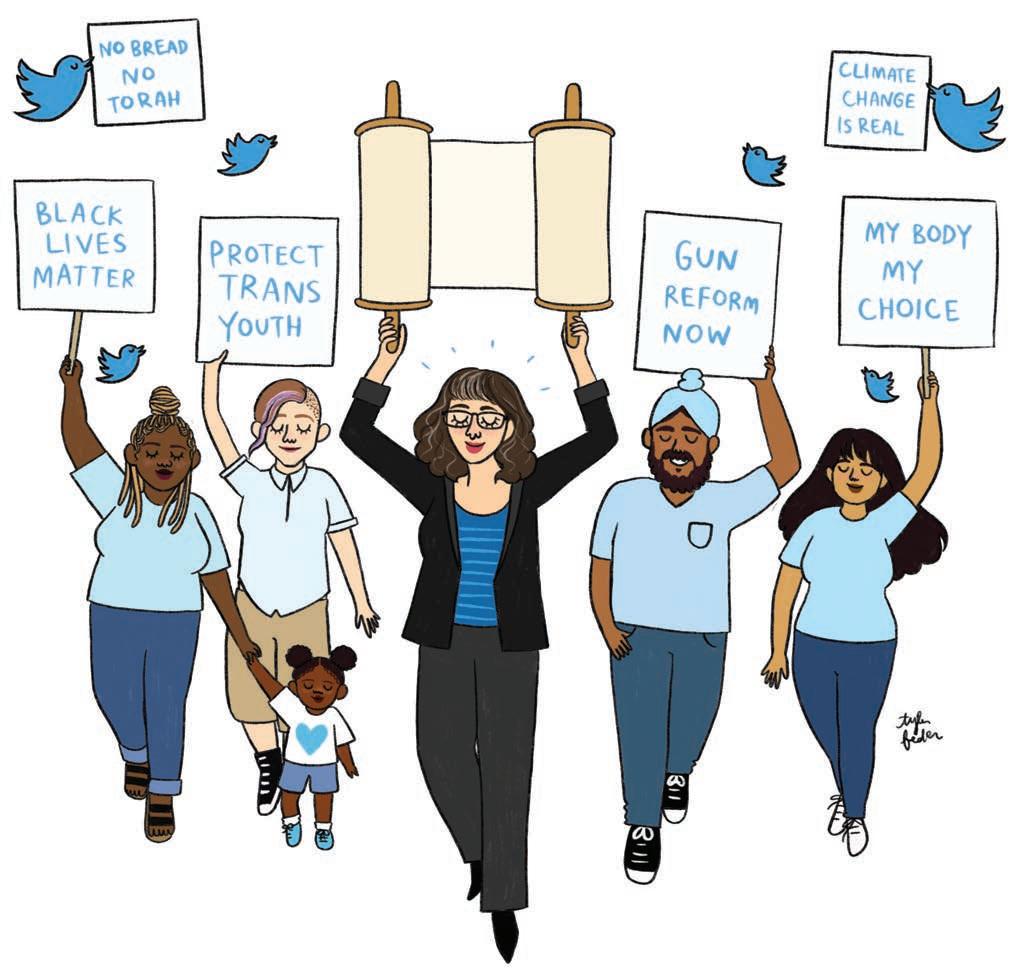
“This, too, is Torah,” says Danya Ruttenberg.
By AIMEE LEVITT
One Tuesday morning about two years ago, Rabbi Danya Ruttenberg was listening to NPR in the car on the way to pick her children up from summer camp. It was in the immediate aftermath of the white supremacist rally in Charlottesville in which a counterprotester had been killed, and Donald Trump had just announced in a press conference at Trump
Tower that “you also had people that were very fine people, on both sides.”
At that moment, Ruttenberg felt the full horror of the events of the weekend. The president of the United States was apparently praising Nazis. This was where we were. Suddenly, everything she looked at seemed intensely, viscerally clear. She could see the faces of the other drivers as they passed by.
She arrived in the camp parking lot a couple
call her out for making comments that were stupid or clueless. It was not unlike the Talmud, the immense compendium of centuries of rabbinic opinions and debates about Jewish law that scholars still study and argue over. (Of the 5,000 disagreements recorded in the Talmud, only 50 were ever resolved, at least on the page.) Recently, she’d begun to post
“I’m a rabbi. I believe words have power. I try to choose mine carefully.
Fuck you, Trump.”
-@TheRaDR
verses from the Torah and discuss them, as she’d learned how to do in rabbinical school— her handle, @TheRaDR, is a play o the Jewish tradition of giving rabbis nicknames that combine their titles and their initials—and she’d gathered a small following.
That day, though, she wasn’t thinking of Torah. Or, more accurately, she wasn’t thinking of one passage in particular. Instead she tapped,
“I’m a rabbi.
I believe words have power.
I try to choose mine carefully.
Fuck you, Trump.”
Then she went to pick up her kids.
of minutes early and, as was her habit, picked up her phone to check Twitter. Over the past three years, since Ferguson, she’d become addicted. It was a way for her to learn what other people were thinking outside her circle of family and friends in Evanston, where she lived, and the wider community of American Jews, where she worked. It was a way to hash out ideas with strangers who were separated by space and time, and who weren’t afraid to
The tweet went viral: nearly 300,000 likes, 70,000 retweets, and thousands of subtweets praising her for her bravery, criticizing her for using foul language, and questioning whether she was even a real rabbi. (And also a meme of a Hasid in fighting stance with the caption “Jew Jitsu.”) Ruttenberg changed her photo to a conventional headshot so her new followers could see that she was, indeed, a woman, though she preferred the one she’d used before: a snapshot of herself getting arrested the previous winter in New York while protesting the Trump administration’s ban against travel from seven mostly Muslim countries. The next day she shared the op-ed about anti-Semitism and Jewish privilege that she’d been working on for the Washington Post right before camp pickup. She didn’t regret what she’d tweeted but, as she admitted two days later, also on Twitter, “it’s not the thing I would have chosen to become temporarily infamous for.” And then a few hours after that: “Judaism talks about the twin poles of chesed (lovingkindness) and gevurah (limit-setting). The
world needs both.” The rabbi was back at work.
In ancient times, rabbis served their communities less like ministers (comforting the afflicted, raising the funds) and more like constitutional lawyers. They were considered experts in the laws in the Torah; they judged legal disputes, advised their followers, sometimes lectured, and taught the next generation of bright young people—in those days, only young men—what they knew. Like modern lawyers, they were experts at interpreting biblical passages and explaining how they related to situations in everyday life.
Ruttenberg is that kind of rabbi. She’s never had a pulpit, nor has it ever felt like the right thing for her (though, as she notes, life is long). Instead she has Twitter, and she uses it to speak to her 83,000 followers about how Jewish tradition can be used to create a better, more compassionate world, accessible not just to Jews, but to everyone. “She’s doing something very old and very new,” says her friend Laura Jackson. “Or something very old in a very new way.”
Ruttenberg in person is very similar to Ruttenberg on Twitter. Or, as Jackson puts it, “Twitter is the place where she’s most like she is in life.” She’s passionate and articulate (and will sometimes pause a conversation to look up the exact wording of a biblical passage on her phone; and yes, there is an app for that). She’s also ebullient and funny. When she speaks, she’s in constant motion, gesturing and laughing; her energy is contagious. Jewish tradition is, for her, a storehouse of 5,000 years’ worth of wonders that she wants to share it with everyone. She has one T-shirt that says “You shall not oppress the stranger” (from Leviticus 19:33) and another that says “Resisting tyrants since Pharaoh.” Sometimes she’s whimsical: she can take a single reference in the Book of Exodus to a mysterious and unspecified animal, follow it through a tangle of Talmudic debates and commentary from assorted scholars across several centuries and continents in order to conclude that the animal must have been a rainbow unicorn, and then alight on a single, essential truth, the point of the exercise: “So this amazing thing was created, brought into being and we mostly missed it—calling it a badger or a weasel or a dolphin. Magic all the time that we don’t see, miss completely, forget. What are the exquisite miracles you need to be careful not to miss today?” And then she decorated the thread with rainbow unicorn GIFs and emoji. (This was, incidentally, the
thread that made me follow her. Where I grew up, Torah study always took place in the dusty synagogue basement and we had to take it Very Seriously. And now here was someone talking about rainbow unicorn Torah, and here I was reading it on my phone on the el, just another magical part of daily life.)
“She’s doing something very old and very new, or something very old in a very new way.”
-Laura Jackson
More often, especially lately, she has been thinking about grief and anger, about immigration, and the best way to conserve one’s energy for the long fight ahead. Twitter for her is like Dumbledore’s Pensieve in the Harry Potter books, a way to store the extra thoughts that are crowding her brain. The great thing about Twitter is that users are able to report on and respond to things in the moment, just as they are happening. This is also what makes it overwhelming. So much is happening, and so much of it is horrible. That is where a Twitter rabbi comes in.
“At this point in history,” she says, “given some very real threats to human safety, it’s like, the force and weight of my tradition are here and have a lot to o er people in terms of understanding what to do, in terms of understanding how to do it, in terms of understanding why, in terms of giving tools to sustain you during the work. My work is really to be like, ‘You guys, look, here’s who needs this tool. Great. Take it. I’ve got a pickax. Who needs a pickax?’”
She has frequently criticized the president and his administration, but since the infamous tweet, she has refrained from profanity. “I own it,” she says. “I meant every word of that tweet. But as a rabbi, you only have one or two times you get to play that card.”
Two weeks ago, the week that began with back-to-back mass shootings in El Paso and Dayton, Ruttenberg noted that the upcoming Sunday, August 11, was the Jewish holiday of Tisha B’Av, a day of mourning the destruction of the first and second temples in Jerusalem, which forced the Jews into exile, and everything that’s happened since. It’s observed with fasting and reading from the Book of Lamentations.
“Yes, classically this day is about mourning the atrocities befallen the Jewish people over the last 2000 years,” she tweeted, “but

I for one cannot read abt ‘babies & sucklings languishing in the squares of the city’ without thinking of children ripped now from their parents, without care.
“I cannot read, ‘all your enemies Jeer at you; They hiss and gnash their teeth, And cry: “We’ve ruined her! Ah, this is the day we hoped for; We have lived to see it!’” without thinking about white supremacy today.
“No, of course this isn’t the plain meaning of the text. But the pain of now is real. The su ering of now is real.
“How can I read, ‘Alas, priest and prophet are slain In the Sanctuary of the Lord!’ and not think of Pittsburgh, Poway, Emanuel AME in Charleston, the Sikh Temple in WI?
“Or of Sandy Hook? Of Pulse? All the times innocents were slaughtered in the midst of their lives and love?
“‘Prostrate in the streets lie Both young and old. My maidens and youths Are fallen by the sword.’
“This is the su ering and pain of then.
“This is the su ering and pain of now. . . .
“If we can make space to weep, to wail, to lament—to ask the ‘why?’ that has no answer—we allow ourselves to be human during this inhuman time.
“We let the unspeakable touch us; we let it matter.”
Ruttenberg, 44, never expected to be a rabbi. She grew up in Glencoe, in a secularized Jewish community where religious observance was at least as much about buying new holiday clothes as it was about actually showing up at synagogue. Her memoir Surprised by God: How I Learned to
Stop Worrying and Love Religion begins with a revelation: 13-year-old Danya, disgusted by Rosh Hashanah services and the notion of God as an omniscient old man in the clouds, decides that Marx was right about religion being the opiate of the people and declares herself an atheist.
But what Ruttenberg discovers throughout the book is that religion is a way to wake herself up to the world and experience it more intensely and intentionally (one of her favorite words). In her teens and early 20s, she had a series of mystical experiences—while dancing in the mosh pit at the all-ages punk club Medusa’s, while walking home from class, while wandering around at night gazing at the moon—in which she felt her mind go still and what she describes as “a feeling of infinity.” In college, at Brown, she majored in religion, not out of a sense of a calling, but out of curiosity; the night before registration, some of her friends were watching The Last Temptation of Christ, and she signed up for a course on early Christianity so she could understand it. She stayed because she loved the mix of philosophy, anthropology, literature, and history. When she was a junior in college, her mother died of cancer. The grief devastated her. By then, she had spent nearly two years studying religious systems. But this was her first experience ever following such a system. She sat shiva at home with her family, where friends and neighbors came to o er love and company and food; the love and care may have been
mandated by tradition, but that didn’t make it any less real. Jewish tradition also requires that children say the Mourner’s Kaddish for their parents three times a day for the first 11 months after a death. The Mourner’s Kaddish itself must be recited in a synagogue with a quorum of at least nine other adult Jews. Ruttenberg began doing that too, or at least once a week, which was, at the time, as often as she could imagine anyone possibly going to services.
“It was an anchor,” she remembers. “Someplace deep inside, I knew what I needed. I’d sit with my prayer book and I was like, huh, this isn’t dumb. I began to see what the ritual was doing. The Mourner’s Kaddish is a prayer in praise of God. You stand up [when you say it] so everyone can see who’s hurting. I was forced to a rm light when things were dark. I would go to random synagogues and people would know I was in mourning because I stood up. I started to like it. It was very strange.”
By the end of the period of mourning, Friday-night services had become a habit that persisted after Ruttenberg graduated and moved to San Francisco, where she worked for a publisher and then as a freelance journalist, attended glitter-filled theme dress-up
“The Torah is functionally a text about liberation and our obligations to set up a liberatory society.”
-Danya Ruttenberg
parties, did lots of yoga, and tried to work out her place in the world. After a lengthy period of synagogue shopping, she found her way to Beth Sholom, a small congregation near Golden Gate Park led by Rabbi Alan Lew, who had been a serious Buddhist for 20 years until, as Ruttenberg puts it, “he meditated himself down to his essence and realized he was a Jewish guy named Alan from Brooklyn.”
The first sermon that Ruttenberg heard Lew give was about Moses’s encounter with the burning bush and how it was a metaphor to describe how humans encounter the Divine when they seek it within themselves and how this can be terrifying. (Ruttenberg believes the Divine within humans, the “radio connection to God,” is simple intuition, the “small, still voice” that tells us what we need, though it may not be what we want. Like, for instance, the voice that would, five years later, tell her to leave the life she loved in San Francisco and go to rabbinical school in Los Angeles.)

Lew became her teacher. “What he did,” she says now, “was show me that the words of Torah are stories about us now here today and what we’re afraid of, who we need to become, about what’s possible, about what gets in our way. It’s a pathway in and pathway out. So much of what I have to say is his Torah. His Torah is in my DNA. I don’t know how to look without him.” (Lew died ten years ago. The last time Ruttenberg saw him was right after the publication of Surprised by God. “I was at a book fair,” she remembers, “and there was Rabbi Lew with a huge smile.”)
Around the same time, she began an ongoing 20-year conversation with Jackson, who would eventually go to an Episcopalian seminary, about the relationship between religion and spirituality and social responsibility, and about being a woman navigating a tradition that has, until fairly recently, been dominated by straight cis men and at times openly hostile to anyone who is not. Ruttenberg is part of the Conservative movement—more observant than Reform, more secular than Orthodox— which didn’t ordain its first female rabbi until 1985.
It’s a surprise to some of Ruttenberg’s followers that although she’s progressive in her politics, she’s conservative in her religious practice: what she eats, where and when she prays, why her Twitter signal goes dark for the 25 hours between Friday and Saturday sundown. But her experience saying Kaddish for her mother taught her that religious rituals exist for a reason and that they serve a real purpose, to transform one thing into another. “The structure and the logic of this
ing too much fun,” a congregant in the back row observed one Shabbat at Shirat ha-Agam.) She clearly loves this. But the small, still voice that told her to become a rabbi in the first place also told her not to take a pulpit or get a PhD and teach in a seminary like Rabbi Abraham Joshua Heschel, the great activist rabbi of the 20th century.
Ruttenberg speaks to her 83,000 followers about how Jewish tradition can be used to create a more compassionate world.
COURTESY
DANYA RUTTENBERG
is meaningful for her,” says Jackson. This structure and logic led Ruttenberg back to God, and now she uses them to make sense of the modern world: gender, sexuality, LGBTQ rights, and climate change, and the mundane bits of everyday life, like what to do when you are praying and your toddler needs to go to the bathroom. As Ruttenberg likes to say (and her followers like to quote), “This, too, is Torah.”
For Ruttenberg, Torah has never been about restriction for restriction’s sake. It’s far more radical than that. “The Torah is functionally a text about liberation and our obligations to set up a liberatory society,” she says. “Many of the prophets are like, ‘Hi, did you read the Torah?’ We have an obligation.”
Ruttenberg attends Saturday-morning services at Minyan Shirat ha-Agam and Lomdim Chavurah, two small lay-led congregations in Evanston. She’s part of the rotation of congregants who take turns performing the “rabbinical” tasks: calling pages, monitoring the Torah reader for mistakes, reading the list of announcements, delivering the d’var Torah, a brief talk on the weekly Torah portion. Ruttenberg’s d’var Torahs are a live version of a Twitter thread: she introduces the text, shares some of the rabbinical and Talmudic commentary, solicits contributions from her audience, and finally draws it all into a synthesis. Later, after Shabbat is over, many of them do, in fact, turn up on Twitter, including the rainbow unicorn drash.
She’s a joyful pray-er. She claps her hands and dances during the celebratory songs and laughs during the Torah reading. (“She’s hav-
So how does a Twitter rabbi exist in the world? Or rather, how does a rabbi whose main platform is a free website earn a living? “Our running conversation is, ‘What do I want to be when I grow up?’” says Rabbi Judy Greenberg, a friend and co-organizer of the Lady Rabbi Pub Nights. Ruttenberg has worked for Hillel, the Jewish organization on college campuses, and for Avodah, a group that sends young Jews to work on community service projects. She’s written many op-eds for the Post and the Atlantic , among other places, and two books, Surprised by God and Nurture the Wow: Finding Spirituality in the Frustration, Boredom, Tears, Poop, Desperation, Wonder, and Radical Amazement of Parenting. She started writing the latter after she began to wonder what theology would look life if were written by someone actively involved in childcare. (Ruttenberg and her husband, an Israeli academic, have three children. They have made the unpleasant discovery that trolls who attack women on Twitter have no compunction about attacking their families, so Ruttenberg has requested that they not be named here.)
This question will remain unresolved, at least for the next six months: Ruttenberg and her family will be living in Israel while her husband is on sabbatical. She hopes to spend her time there volunteering with Encounter, a group that introduces American Jews to Palestinians, and Breaking the Silence, an organization of Israeli Army veterans who take their fellow Israelis on tours of the Occupied Territories to show them what life there is really like. She believes she has an obligation to be useful wherever she is. She learned from Gandhi that protest is more powerful if it’s tapping into something larger. She has a deep knowledge of 5,000 years of divinely inspired tradition; she can be not just a conduit for that, but a wellspring. But it’s also not just knowledge for its own sake.
“Pirkei Avot, the wisdom of the sages, says if there’s no bread, there’s no Torah, and if there’s no Torah, there’s no bread,” she says. “Like, first we worry about making sure everybody has bread. And then we can talk about Torah.” v
@aimeelevitt
Some of the best entertainment in the city this week is an automata auction.
By KATE SIERZPUTOWSKI
In the 1972 thriller film Sleuth, a crime fiction writer named Andrew Wyke (played by Laurence Olivier) plots revenge on his wife’s paramour in an isolated manor filled with games, costumes, and automata. The automatons serve as lifeless witnesses to his bizarre robbery setup, and the camera often zooms in on their facial expressions during key moments of conflict in order to animate the rising tension. A jovial sailor is triggered to cackle at Wyke’s unpleasant jokes, while others perform acts of foreshadowing —like a clown who waves goodbye before a particularly fraught struggle. One of the prominent mechanical figures from the film, a nearly life-size magician with expressive eyebrows, is set to be auctioned at the magicanacentric Potter & Potter Auctions in North Center on August 24. It’s part of a suite of 154 vintage and modern automatons, marionettes, wind-up toys, and other humanoid figures dating back to 1860.
Automatons are machines built to follow a predetermined set of actions, often to the confusion or amazement of the viewer. Although stories referencing automaton-like mechanics have been told since the days of ancient Greece, the most notable forms were built in Paris’s Marais neighborhood during the Golden Age of Automata (1860-1910) by a group of seven key manufacturers. The term “automa-

ta” comes from the Greek verb for “acting of one’s own will,” and in many cases the figures’ sleek yet looping actions do dazzle the viewer into believing they might be moving according to their own design.
“That is what the automaton is: a series of movements that create a story within themselves,” says Michael Kam, a retired attorney in Atlanta, Georgia, and the sole source for the figures in the auction. Kam has been a part of the International Brotherhood of Magicians for the past 58 years. Magic was his entree into an obsession with automaton figures, both their origins and their precise inner workings.
One of his favorite magicians, Jean Eugène Robert-Houdin (also known as the father of modern conjuring), was a horologist and automaton maker, two hobbies that go hand in hand because of the clockwork that powers many automatons. Some of Robert-Houdin’s best-known pieces were “mystery clocks” that seemed to operate from clear pedestals, to the amazement of the viewer.
Although it’s large, Kam amassed his collection in just under 15 years. Much like the cunning gamesman of Sleuth, he too enjoyed filling the rooms of his home with his hoards of mechanical friends, placing the figures at least ten deep in his guest room, lining the walls of his office with 20 more, and even placing a large number around his bedroom (that he
shares with his wife). Kam keeps videos of his collection on his phone in case he happens to meet someone who might not be familiar with automatons, and he describes each of their in-
AUTOMATA: LIFE AND OTHER ILLUSIONS
Sat 8/24, 10 AM, Potter & Potter Auctions, 3759 N. Ravenswood, 773 - 472-1442 , potterauctions.com . For more photos, visit chicagoreader.com
tricate movements with the pride of a parent whose child has just managed to take their first step. Initially he limited his collection to just magicians, but as he continued to collect he became attracted to automata that performed acrobatic acts and figures that could actually smoke cigars or cigarettes with the help of embedded bellows.
Potter & Potter Auctions is the only auction house in the world that specifically sells magicana, such as books, tricks, posters and prints, and other “allied arts” ephemera like vintage coin-op games and rare toys. Owner Gabe Fajuri has been a regular at magic conventions since he was a 12-year-old in Detroit, and moved on to collecting and selling magic miscellany when he was just 15. His dad and
current business partner, Sami, is also a collector, and he was more than happy to encourage Gabe’s early business e orts, driving him to conventions long before he got his license. But Fajuri’s greatest mentor was the Chicago magician and collector Jay Marshall. Fajuri first met him when he was 13 and visited Magic Inc., Marshall’s Lincoln Square shop, during a family vacation. They became better acquainted at a convention a year or two later.
“When I moved to Chicago,” Fajuri says, “I started to go [to Magic Inc.] every weekend, and then one day, with the chutzpah of a 21-year-old, I asked to go upstairs, not realizing that he didn’t let people do that. Then I kept doing that on subsequent weekends. Eventually he would say, ‘Hey, I am driving to this convention, do you need a ride?’ Or ‘I am going to Las Vegas, do you want to join?’ I certainly came late to that party. He was 85 when he died, and a lot of people had known him way longer, but I knew him fairly well for the last four years of his life. We went on a lot of trips together in those few years.”
This brief yet deep friendship led Fajuri to be chosen as the appraiser of Marshall’s multimillion-dollar collection after the magician’s death in 2005. It took Fajuri years to inventory, track, and sell the pieces. It was the first auction he handled personally, and e ectively the start of Potter & Potter. Since his time digging through Marshall’s collection, Fajuri has continued to expand his knowledge of the magic arts. He sourced all of the posters and antiques that line the Chicago Magic Lounge, and is bursting with enough historical magic facts to take you on an hours-long walking tour of Chicago, dropping specific details such as where magic magazine the Sphinx was founded in 1902.
Over the years the auction house has sold extremely rare magic-oriented ephemera. Harry Houdini’s three-sheet “Water Torture Cell” poster sold in February 2017 for $114,000, one of the highest prices for a magic item ever sold at auction, second only to the torture cell itself. Potter & Potter has also sold a $40,000 arcade game, a set of Houdini’s handcu s, and a book about cheating at cards called Pharoah Exposed that went for $24,000. David Copperfield, David Blaine, and Criss Angel are all regular customers.
Although automatons might not be directly considered magic objects, explains Fajuri, the
dazzling creations are considered a magic-adjacent subject. “My interest is in the reverse engineering,” he says. “It’s not so much how it performs, but more about how does someone think that up and then reverse engineer the mechanism that doesn’t exist for any other purpose other than to accomplish that specific function? I am interested in the thinking and the ingenuity behind that.”
Often automatons have been used to assist a live magician’s act by performing their own tricks. In one 1920s-era piece from the auction, a tuxedo-clad magician moves a hoop over his levitating assistant as if there’s no connection between her fabric-covered body and the table below. In another from 1860, the oldest piece in the collection, a tiny magician makes a die, a loaf of bread, three balls, an apple, and two pears appear and disappear from a set of miniature silver cups. The latter, like many, is set to music, adding another element of pageantry to the decades-old clockwork objects.
The magician automaton is the only piece that actually played a role in Sleuth, but several others in Kam’s collection share particular movements or a similar appearance with members of the film’s nonliving cast. A blond piano player created in the 1890s plays a piano-harp decorated with angels, roses, and fruits; a drinking bear from the 1940s pours and consumes cup after cup of real water; and several acrobat automatons made between 1890 and 1985 perform complex tricks using ladders or chairs.
In order to demystify the craft for noncollectors, Kam has decided to fund a documentary titled Life and Other Illusions that aims to explore the world of automatons, both vintage and modern, in a practical way that goes beyond their obvious eccentricities.
“I always want to know how things work,” he says “[That’s] the mystery of the older pieces. Many people haven’t heard of these things, and when they see them they become fascinated. That is what the documentary is about. It’s not just about the automata; it is how they work.”
Potter & Potter will preview the auction on Thursday, August 22, from 5:30 to 7:30 PM. There will be demonstrations of the machines in addition to information about their origins and inner workings, perhaps with a few animated eyebrows adding dramatic tension to what is estimated to be an $800,000 collection. v
@KateSierz
ELIANA LA CASA AT CHICAGO WOMEN’S FUNNY FESTIVAL Thu 8/22 , 10 PM, and Sun 8/25, 5 PM, Stage 773, 1225 W. Belmont, 773 -327- 5252 , stage773.com. All-festival pass $150, nightly passes $ 36 -$ 60. See website for complete schedule.

COMEDY
Argentina’s Eliana La Casa hosts the first all-Spanish showcase at Chicago Women’s Funny Festival.
By BRIANNA WELLEN
As a teenager in Argentina, Eliana La Casa wasn’t exposed to a lot of comedy. At the time Netflix wasn’t around and there were no Comedy Central specials—it was in a high school class in 2009 that La Casa first started learning the form and then became an audience member herself. Since then, she’s built a comedy career in the country performing and running shows of her own. Last summer she was featured on the TV special Comedy Central Stand-Up: Argentine Edition In May she came to the United States for only the second time in her life to widen her comedic scope and study improv at Second City for six months. While here, she quickly found herself being booked on stand-up showcases, proving that jokes about some experiences— like worrying about your Tinder date being a serial killer—transcend all cultures.
On Sunday, August 25, at 5 PM La Casa will host the first-ever all-Spanish-speaking showcase at the Chicago Women’s Funny Festival.
Ahead of the fest I chatted with La Casa about the challenges posed by translation, the need for more all-Spanish-speaking shows, and the relationship between comedy and activism.
What were the main things you first noticed about the difference between comedy in Argentina and comedy in the United States? I feel there’s a style and a content difference. Of course there are trends in stand-up, and I feel like now what’s on trend is a very natural-sounding anecdotal, almost storytelling style. I feel like most people here are moving in that direction, and I would say in Argentina stand-up comedy is still a lot more setup, punch line. We have this way of thinking that whatever happens in the States is best, but actually I see a lot of people trying to go for that natural feeling and that natural tone by riffing, riffing, riffing until they get to a joke and feel natural. I feel that most comedians who sound really natural but also have great jokes actually do it the other way around. They develop a very good joke, and they run it so many times that eventually it sounds so natural that it feels improvised.
Obviously your jokes are translating very well in Chicago. How do you go about creating material in Spanish and English? It’s something that I’m still trying to figure out. In Argentina I do produce and host a show in English, and what I’ve been doing in that show for the past couple of years is that I literally translate my jokes from Spanish into English. Of course not every word can be translated, and not every cultural reference works for English speakers. What would happen was out of an hour of material, I would only be able to translate 20 minutes. Ever since I’ve been here I’ve been trying to develop new material, and I find it really hard because being here it didn’t make any sense to write in Spanish and then translate it into English, it made a lot more sense to go directly into English. I’ve been able to pull out some one-liners or I’m a big fan of jokes about whatever’s happening that day or anything to present myself to an audience who doesn’t really know who I am, and that I can definitely manage. But to work on a five-minute new bit, I’m still struggling. We’ll see if I can come up with something new.
Are there other differences in the translation, like working on the rhythm of how you hit punch lines or things like that?
Of course grammatically it’s a challenge
because whatever the funniest word or funniest point is, that has to be at the end. Spanish and English work grammatically opposite, so in Spanish it’s like “un auto rojo” and in English it’s “a red car.” So if your punch line is “red,” in English that’s not going to work so you have to build it like, “Oh the car, it was red” or whatever you can manage to do so it works for you.
Why do you think it’s important for a full Spanish-speaking show to continue in the city?
I’m not from here so it would be weird to say, you people should definitely have this regularly, but being a Spanish speaker in this city that has so many other Spanish speakers, it’s weird that [an all-Spanish-speaking show] is extraordinary. I would think that this would have been happening for a long time now. Americans love having a taco festival or love listening to Colombian mariachi, clearly there is an interest in Latin culture or Hispanic culture in general, so why not approach it in its original language? In translation you miss out on a lot.
What continues to draw you to comedy? For me, stand-up only comes from having a strong feeling about some subject, it doesn’t matter if it’s excitement or hate or rage or embarrassment or whatever, I just feel that those ideas are so much easier to digest if you’re making people laugh. For me it’s also a form of political militance because you’re getting your thoughts across. And maybe you’re performing for an audience that is already aligned with your ideas, sometimes you are not, but your ideas will be there anyways. I just hope that one of those ideas will stand in those people’s heads, and I can go home being like, “I changed the world!”
In Argentina there is a small but at the same time thriving comedy scene. There’s a strong women’s movement down in Argentina. We had the abortion bill discussed for the first time last year, and actually all the women in comedy in Buenos Aires gathered together to sign a petition for Congress members to approve the bill. We made a collective called Feminist Comedian. The bill didn’t go through, but in a way it was just the first step of visibility. I hope that that same activism would reach other parts of the world. I feel there’s such a strong collaboration between comedy and activism, and I truly hope that we have it here too. v
@BriannaWellen

Let’s get small
Joanna Furnans contemplates the minute in Doing Fine
By IRENE HSIAO
Minute movement. Mundane moments. Memoir.
A spinal injury sidelined Joanna Furnans early in the process of creating her new immersive solo performance Doing Fine. “I wasn’t sure if I would be able to keep going with dancing or what the recovery would look like,” she says. “What kind of motor skills do I have if I can’t use my spine as liberally as I would like to?” The resulting exploration of “fine movement”—which she describes as “minute, particular, exacting, not sweeping”— as well as the consideration of the place performance holds in a life composed of “multiple things: a health thing, a stress thing, a family thing, our jobs, what we do for fun, all the things that make up who we are and what we do with our lives” led Furnans to the concept and title of Doing Fine, both an expression that indicates a moderate condition of being and the execution of small motor control in the absence of larger possibilities. The play on words was another route into the work—Furnans has written about dance in venues including Windy City Times and Performance Response Journal. Experienced interviewing other choreographers in the city, she says, “I loved the process of hearing who they are and how they got to be making these things they’re making, so I started asking those questions of myself— how did I get to this point in my making and my trajectory and history?”

While Furnans ultimately escaped the limitations of injury (“I was getting a little bored of fine motor skills,” she admits), autobiographical writing took on a central role in the form of a text for audiences to read as part of the performance. “I knew I didn’t want to write autobiographical stories that were dramatic or catastrophic—I luckily don’t have much of that in my history,” she explains. “I was interested in seeing if people are interested in paying attention to a story that’s not overdramatized. Can the banality of our lives hold equal value? What are the mundane and day-to-day events that I experience as memoir?”
Engaging the autobiographical in dance was a collaborative process for Furnans: a cross-country series of one-on-one residencies with dance makers she encountered at pivotal moments in her history as a dancer:
DOING FINE
8/22-9/8, Thu-Sun 2 PM, the Grey Space, 1803 W. Byron, suite 104, doingfineperformance@ gmail.com, $20
Lu Yim of Portland, Deborah Go e of Holyoke, Morgan Thorson of Minneapolis, and Molly Shanahan of Philadelphia and Chicago. Each contributed source material that Furnans has woven into a continuous solo. “It has been eye-opening to be able to find my voice in writing [next to] the silence of my body dancing. We project onto performers and wonder what they are thinking about. I interrupt that by giving you a sense of what my voice is like, what my life is like.” v
@IreneCHsiao
Red Tape Theatre’s new staging of All Quiet on the Western Front has some weak spots, but makes the story feel universal.
By CATEY SULLIVAN
Red Tape Theatre’s take on Erich Maria Remarque’s 1929 classic is as powerful as it is frustrating. When it hits, it hits hard. When it misses, it misses just as hard and is all the more heartbreaking for it.
Set on and around the Western Front during World War I, Remarque’s story follows the fate of a crew of German boys barely out of high school. They embody the generation sold on and as “Iron Youth” before being sent o as cannon fodder for the fatherland. Failure to report for duty meant public shaming at best.
Given the history, many theaters would have gone traditionally Teutonic and cismale with their casting. But with adapter-director Matt Foss’s 12-person ensemble, casting director Catherine Miller and Red Tape don’t let history dictate who gets to play what role. Of all the casts onstage this summer in all Chicago, I’d lay odds that Red Tape’s looks the most like the city it serves. The play is the better for it: Remarque’s brutal story wasn’t just for Germans. He was talking to the world about a problem that impacts every human in it. In this cast, the concept of Everyperson is truly personal; no matter who you are, you’ll probably see someone who looks like you. What Paul (Elena Victoria Feliz) and his company en-
dure, so do we. That’s power and drama—the fundamental essence of good theater. Despite that, there were major misfires opening night, some that are hopefully onetime tics, others that are structural. The production’s biggest problem is its repetitiveness and (related) the often laborious transitions between scenes. All Quiet needs an editor. It’s a predictable problem that
Through 9/ 14: Fri-Sat 7: 30 PM, Sun 2: 30 PM, Mon 7: 30 PM, Greenhouse Theater Center, 2257 N. Lincoln, redtapetheatre.org, F
often a icts shows penned and directed by the same person.
The first time All Quiet thrusts the audience into the explosive light, dust, and ear-ringing annihilation of mortar fire, you can practically feel the impact of the bombs. Leah Urzendowski’s choreography and movement direction have a gorgeous, balletic feel that somehow highlights the terrible, random cruelty of mass carnage. But by the fourth time the colored smoke engulfs the stage, it just seems like overkill. That might have been the intent—to show how easily we
can normalize the atrocity of violence and horror. If so, the point is taken, but its execution is still lacking.
There are flashes of ingenuity throughout: Dustings of snow isolate the dead or dying. Fingernails brushed over piano wires create the humming dissonance of a place where the very air crackles and pops with tension. A pair of battered boots become the symbol of both survival and despair. Speaking of which: Rachel Sypniewski’s early 19th-century German military wear is impressively detailed, down to the leather pouches and olive-drab trousers.
Remarque’s book makes readers feel the scythe slicing the air with his brutal descriptions of pointless death. You read it, and you understand why it was banned under the Third Reich. Red Tape doesn’t always capture the urgent intensity of Remarque’s writing, particularly the way Remarque underscored the brutality of the mundane. As the soldier at the center, Feliz seemed tentative and uncertain opening night. It’s an extremely strenuous role, both emotionally and physically, and
it seemed to daunt the actor at its center. Hopefully that will subside as the run continues. Feliz’s Paul seemed to grow increasingly haunted as the intermission-free production continued; by the end, you believed every bit of his despair.
All Quiet is at its best when the dialogue cuts out and Dan Poppen’s sound and Stephen Sakowski’s lighting merge with Urzendowski’s movement to create indelibly vivid images.
Nicholas James Schwartz’s set is a thing of terrible beauty: before a backdrop of shadowy barbed wire, ruined pianos serve as trenches, glowing from the inside in a tangle of guts made of gleaming strings.
More than anything, this is an ensemble show, and this ensemble makes the comradery onstage feel stone true. You can almost see the bonds that form among the soldiers as they move from one hellscape to the next.
As always at Red Tape, tickets are free. All Quiet isn’t perfect, but it’s worth your time. v
@CateySullivan








A monster made of saccharine
Music Theater Works pulls out all the stops, but can’t breathe life into The Hunchback of Notre Dame.
Music Theater Works presents a stage musical adaptation of the Disney cartoon of Victor Hugo’s 19th-century parable about inner beauty and outer ugliness. Director Rudy Hogenmiller, a perfectly competent cast of 40, and a large and capable technical crew do all they can to breathe life into this saccharine monstrosity, but they don’t stand a chance.
Hugo’s story (adapted here by book writer Peter Parnell) depends on Quasimodo’s physical hideousness to sell the idea of his hidden inner goodness. But here we’re presented with a perfectly average young man (played by Billy Dawson) wearing a bag on his back to stand in for a hump. I kept thinking of Charles Laughton’s film portrayal. That was a monster; this is just a guy playing make-believe. None of the other characters are distinguishable in any way either.

The selling point of this kind of thing, of course, is the score by composer Alan Menken and lyricist Stephen Schwartz, fabricated at the same light opera mill that gi ed the world with Wicked and Aladdin. I forgot each number before it ended. I kept wondering what the point of making a live-action show of a cartoon could be, aside from creating another revenue stream for a ravenous multinational entertainment entity. The crowd I survived this production with averaged around 70. They dutifully clapped a er each faux-dramatic musical peak, but I kept thinking that the intended audience is likely children. This Disneyfied morality tale can’t possibly be of any interest to anyone with a modicum of intelligence. But even a smart kid would save their allowance and just watch the original cartoon if there was nothing else on.
We may not understand exactly where songs like “Dock of the Bay” and “Eight Days a Week” fit in the lives of these characters, but Mixtape allows room for humor and mystery in its instant drama, with a minimum of self-indulgence. —KERRY REID MIXTAPE Through 9/28: Fri-Sat 8:30 PM; no performances 8/30-8/31, Theatre Momentum, 1803 W. Byron, theatremomentum.com, $10.
Elinor Cook’s play captures the tenderness and grit of female friendships.
—DMITRY SAMAROV THE HUNCHBACK OF NOTRE
DAME Through 8/25: Wed 2 PM, Fri-Sat 8 PM, Sun 2 PM, Cahn Auditorium, 600 Emerson St., Evanston, 847920-5360, musictheaterworks.com, $34-$96.
Theatre Momentum’s Mixtape offers an improvised one-act drama with music.
Theatre Momentum, which under the leadership of Tony Rielage lays claim to being the only company in town dedicated to dramatic improv, brings interstitial music into the mix in its latest offering. The cast and the story shuffle with each performance, but the constant is singer-guitarist Tony Nuccio, whose live song selections provide the transitions between the scenes in the improvised one-act play.
On the night I attended, the bookends for the nearly hour-long show involved two friends (played by Micky Govern and Joe Sergio), caught in conversation right a er the memorial service for another friend. The “mixtape” purportedly represents the songs played at the service, but mercifully nothing was too obviously on the nose. Rather, the performers (directed by Peter Athans) demonstrated an admirable knack for subtlety in cra ing a story of a group of former college friends wrestling with the inevitable pangs of growing apart. Though the age disparity in the cast undercut the believability of the premise at times, the ensemble’s strong listening skills paid off as they built the narrative arc from a series of two-person scenes teasing out bits and pieces of the backstory to a party where all the earlier dramatic spadework paid off.
Gender isn’t binary. It’s an idea that should also apply to depictions of women’s friendships. So o en, one character must constantly suffer and look on while her platonic pal leaves her in the dust and rises. The end result is usually unfair and unrealistic, as heavy-handed as three wet coats of nail polish.
Interrobang Theatre’s U.S. premiere of Out of Love (directed by Georgette Verdin) tries its best to escape this imbalance. In this nonlinear drama—on Sotirios Lavaditis’s graceful, slanted set—chutes and ladders is the name of the game. Lifelong friends Lorna (Sarah Gise) and Grace (Laura Berner Taylor) grow up inseparable, experiencing their share of grief and shitty men while plotting to get out of their small English town. One fails. The other takes off. The two keep orbiting each other, even when the bleakness of distance and growing apart hits in their late 20s. The gravity of aging brings them back.
As it ebbs through Lorna and Grace’s bond, the show bites at patriarchal bullshit. Playwright Elinor Cook’s feminist sensibilites are at their most delectable as Actor 3 (Peter Gertas)—the show’s only man—wholeheartedly plays all the male characters, bestowing a different depiction of privilege and lethargy to each. In Grace and Lorna’s mythology, all men eventually become the same monster. These supporting roles give Gise and Taylor ample space to embody the heat and rage that forge female friendships, relatable and occasionally hideous impulses I’ve certainly held on to since girlhood. Clearly written for folks who can summon those feelings, it’s a speedy 75-minute show that manages both tenderness and grit. —KT HAWBAKER OUT OF LOVE Through 9/14: Thu-Fri 8 PM, Sun 3 PM, Rivendell Theatre, 5779 N. Ridge, 312-219-4140, interrobangtheatreproject.org, $32, $16 students. v
AFTER THE WEDDING ss Directed by Bart Freundlich. PG-13, 110 min. In wide release.
Hollywood turns A er the Wedding into something smooth, glossy, and bland.
By LEAH PICKETT
For this critic, there are few things more stimulating to unpack than a movie that has all the elements to succeed and balks. After the Wedding, a well-equipped redo of the 2006
ssss EXCELLENT sss GOOD ss

FINAL WEEK! PLAYING AUGUST 23 - 29:
DEVIL’S PIE—D’ANGELO THE NEO-SOUL SINGER’S COMEBACK!
AUGUST 23 & 24
BESSIE COLEMAN: FIRST BLACK AVIATRIX SPECIAL GUEST PANELISTS IN PERSON! AUGUST 24 & 27
WOMEN OF COLOR (SHORTS) FILMMAKERS IN PERSON!
AUGUST 25 & 26
CROOKLYN
JOIE LEE & ZELDA HARRIS IN PERSON! CLOSING NIGHT! AUGUST 29
POST-SCREENING RECEPTION SPONSORED BY


Danish melodrama from director Susanne Bier, is one such curious dud. It places two outstanding actors, Michelle Williams and Julianne Moore, in sparring roles previously occupied by men: Mads Mikkelsen and Rolf

Lassgård, respectively. Billy Crudup plays the sweetheart at the point of their triangle, a woman (Sidse Babett Knudsen) in the original. Moore’s real-life husband, filmmaker Bart Freundlich, carefully directs and adapts the
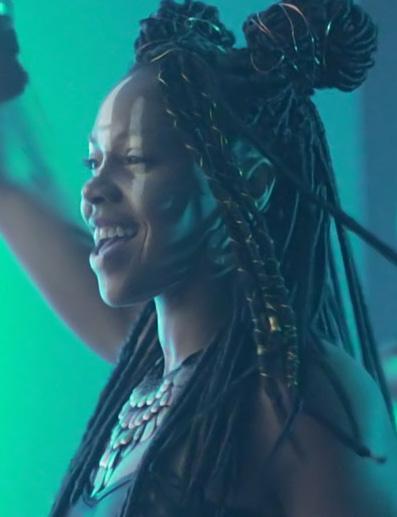
twist-filled story originally cowritten by Bier and Anders Thomas Jensen. But while Bier and Jensen’s jagged little film was a popular and critical coup, netting an Oscar nomination in 2007 (for Best Foreign Language Film), the smooth and glossy remake falls flat. Without divulging any twists, here is the basic setup. Isabel (Williams) is an American aid worker at an orphanage in Kolkata who travels to New York at the behest of a media mogul, Theresa (Moore), who is selling her company and dangling a $2 million donation. During their first meeting at Theresa’s capacious Manhattan o ce, Theresa brings up the wedding of her daughter, Grace (Abby Quinn), at the family home in Long Island the following day and invites Isabel to attend. Isabel’s arrival at the estate shared by Theresa and her sculptor husband, Oscar (Crudup), triggers a cascade of dramatic events. Regrettably, the film’s underwire of tension, taut and throbbing in the first act, begins to loosen in the second and goes completely slack in the final third.

Like most interesting failures, there is no one reason but many small ones that add up to the end-credits feeling of “So?” The fi rst is that the connections between characters feel weak when they should be overpowering. By comparison, the 1998 weepie Stepmom , costarring Susan Sarandon and Julia Roberts, contains several parallels to After the Wedding and, while more sentimental, is also more convincing. Sarandon and Moore’s characters are the cherished power moms: feared by some, respected by all. Meanwhile, Williams and Roberts’s characters (who even share a name, Isabel) are the free-spirited, kind of bohemian interlopers into affluent family units. This dynamic works better in Stepmom , though, due in large part to two memorable scenes. In the first, Sarandon’s character and her kids di use a di cult situation by singing and dancing to “Ain’t No Mountain High Enough” while wearing pajamas and using household objects as microphones. In the second, the power mom tearfully shares with Isabel—her “other woman” in multiple senses of the term—what it truly means to be a mother, and more specifically, how to mother her own children when she’s not around.
Theresa gets shades of these moments with her three kids and with her Isabel, but none possess nearly as much detail or rich, evocative backstory to fill in and round out these characters’ relationships. Instead of teaching Isabel—or learning from her— Theresa just tells her, this is what you’re going to do. Theresa’s plan doesn’t change much, and Theresa doesn’t change much either. The film culminates with the creation of a new family unit, but the resolution feels unearned. Attempts at bonding are strained and stay awkward, especially between Grace and Isabel; personal histories remain muddy, especially the one between Isabel and Oscar; and there are no singing-into-the-hairbrush moments, save some playfulness between Theresa and her eight-year-old twin boys. The viewer meets Theresa scream-singing to “The Edge of Glory” in her car alone, but what does she like to sing or even do with 20-yearold Grace? What are their mutual likes and dislikes? We are told they are close, but why, precisely? With two exceptions—Isabel and Jai (Vir Pachisia), an orphan she has grown attached to in Kolkata, and Oscar and Grace, whose bond is specific and separate from the others—all of these people feel like strangers to each other.
This patina of actors playing house might have cracked with more danger and pathos, or a thrum of anxiety that mounted with each surprising turn, but no. For the most part, the characters’ reactions are muted, and the fallout of each betrayal or disagreement seems mild. A welcome prick of electricity between Oscar and Isabel during their first scene together is duller in their next, and practically dead in subsequent interactions. One mordant exchange between Theresa and Isabel late in the narrative hints at what the film could have achieved with more nerve. Unfortunately, the deficit of palpable drama boils down to the fact that the plot was in motion before Isabel arrived, and given the circumstances, continues to its tidiest possible conclusion. But the movie’s biggest issue blooms from its core: it doesn’t seem to know what kind of movie it wants to be. Did its makers envision a worldly, sweeping, somewhat political drama?
This tracks through cinematographer Julio Macat’s gliding drone shots over the Indian countryside, the inclusion of a brown-skinned housekeeper in Theresa’s opulent kitchen, and the first sit-down between Theresa and Isabel, where the latter brings up the problem of child sex slavery and Theresa’s assistant interrupts to report a “lobster shortage” in the wedding
OLD BOYFRIENDS ss1⁄2
Directed by Joan Tewkesbury. R, 103 min. Mon 8/26, 7 PM, Music Box Theatre, 3733 N. Southport, chicagofilmsociety.org , $10
risotto. But the movie mostly takes place in the whitewashed and upper-crust enclaves of New York, either at Theresa’s luxurious manse or the trendy boutique hotel where she stations Isabel. The Kolkata-set portions that bookend the film are shimmery and sanitized, warm-toned to contrast with NYC’s cooler palette. The maid gets one line and no further mention. Theresa never questions why she’d rather throw money at the third world than hear about its discomfiting particulars. If anything, Theresa resembles a Nancy Meyers matriarch in a Nancy Meyers kitchen—chic, a little neurotic, and mainly concerned with her own family and legacy—and remains so. Was the film supposed to be a dark, intimate indie with cutting observations to spare, more akin to Closer than Stepmom ? A handful of prickly confrontations suggest that this route was approached, but ultimately, Freundlich holds back. His version of After the Wedding sands the edges of its prototype; trades urgent, handheld camerawork for distance and Steadicam; and turns a pungent story into something more palatable, bordering on bland. His take looks and feels lighter for that, and also less alive. v
By KATHLEEN SACHS
As with its subject, romantic relationships, Joan Tewkesbury’s Old Boyfriends can be considered in terms of what it is as well as what it could have been. Ultimately, under Tewkesbury’s tenderly intricate direction, what it is triumphs, resulting in an idiosyncratic debut feature heretofore largely unavailable for viewing and ripe for rediscovery among fans of American cinema from the 1970s. Tewkesbury is one of the women directors from this transformative era of filmmaking—others include Elaine May, Barbara Loden, and Joan Micklin Silver—who have been widely underrecognized and who
are only just recently getting the attention they deserve. This Monday the Chicago Film Society will screen a newly struck 35-millimeter print of Old Boyfriends, giving Chicago audiences a chance to discover Tewkesbury’s skill as a director.
Best known for cowriting Robert Altman’s 1974 masterpiece Thieves Like Us and writing his 1975 piece de resistance Nashville , Tewkesbury transitioned to directing with Old Boyfriends , with a script by brothers Paul and Leonard Schrader. (Tewkesbury and Paul had the same agent, who facilitated the arrangement after Paul became unable to direct.) Before it was Old Boyfriends it was
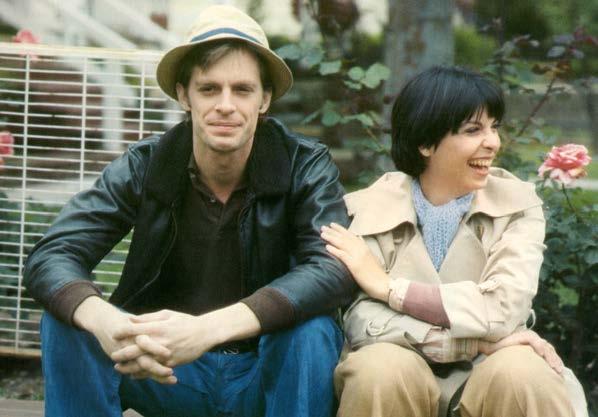
Old Girlfriends —one can only imagine what that would have been like given the Schraders’ predilection for self-destructive protagonists whose anger toward society has a decidedly masculine perspective. According to Maya Montañez Smukler’s book Liberating Hollywood: Women Directors & the Feminist Reform of 1970s American Cinema , it was Paul who decided to make it about a woman rather than a man, though Montañez Smukler notes that Tewkesbury reworked the script to “soften the








darker elements.” It’s Tewkesbury’s refined sensibility that comes through and liberates her characters’ innate womanhood from the Schraders’ acerbic scripting.
Talia Shire stars as Dianne Cruise, a thirtysomething Los Angeles-based psychiatrist who takes a literal trip through her romantic past, driving cross-country to visit men she once dated. “I thought if I could find out who I was then, I might find out who I am now,” she says in voice-over narration toward the beginning. The first ex she visits is her college boyfriend, Je (Richard Jordan), now a creatively challenged documentary and commercial director with an estranged wife and a precocious preteen daughter. The second, from high school, is Eric (John Belushi, in between National Lampoon’s Animal House and The Blues Brothers ; he’s phenomenal as a cocksure sleazebag), a formal-wear rental salesman who’s still jamming with his cover band. Finally comes Lewis, her middle-school boyfriend who, she discovers, died in Vietnam; with Lewis gone, she turns her attention to his younger brother, Wayne (Altman regular Keith Carradine, brilliant as always). They become tenuously involved, though his long-term emotional perturbation over his brother’s death complicates things, further calling into question Dianne’s emotional stability. Each experience yields its own charms and complications, though the encounters get progressively darker as Dianne goes further back into her romantic past. Meanwhile, Jeff pursues Dianne in LA (she had disappeared after their reunion) and discovers pieces of her more recent, more complicated past, including a nervous breakdown and a suicide attempt, the latter of which abstrusely opens the film.
Old Boyfriends frames these encounters with diary entries, read in voice-over by young actresses who sound like they’re around Dianne’s age at the time she wrote them. This motif is a hallmark of Paul Schrader’s (he used them in his scripts for Taxi Driver, Light Sleeper, and First Reformed), but Tewkesbury transforms it by grounding it in a female perspective. She also changed the script by stripping bare the original revenge angle (though that still factors into the scenes with Eric, who publicly humiliated Dianne after she refused to sleep with him in high school); this change ultimately softens the story, making it more introspective than rancorous. According to Tewkesbury, the shift upset Paul, who she said “would have been more comfortable if we had directed it like a horror film.” In his
book Schrader on Schrader & Other Writings, he writes, “I would have pushed things more and made them more edgy, more spooky, more scary, with characters that are more mesmerizing and more obsessive.”
Captivating as Schrader’s films can be, I find Tewkesbury’s restraint more interesting, as it results in something hazily impenetrable and truer to the often ambiguous nature of people’s thoughts and motivations. Writing about the film for Variety , Dale Pollock remarked that “[w]hat’s missing, in both the Schraders’ script and Tewkesbury’s direction, is a strong sense of just why Shire is trying to recapture her past, other than idle curiosity.” This isn’t entirely true (Dianne states her motivation outright at the beginning), but Old Boyfriends does exude a sense of deep contemplation that might seem like idle curiosity to anyone but the person doing it, resulting in a dreamlike quality that may beguile more than it satisfies, though to intriguing e ect.
Before going into film, Tewkesbury had been a dancer, choreographer, and theater director, and the influence of each of these disciplines can be felt in Old Boyfriends, especially in her focus on the performers. After a screening of the film at New York’s Metrograph in early August, Tewkesbury emphasized her relationship with the actors, saying that she pulled from them to inform their characters. Shire was going through a divorce at the time (her husband, David Shire, composed the film’s provocative score), and Belushi gave input into his character’s decidedly lowbrow musical aspirations. As Jeff, Jordan capitulates to Shire’s Dianne and thus to the film itself— though not in a bad way—and Carradine, as in all his performances, skillfully disappears into his role.
Sadly, it was Tewkesbury who disappeared from the big screen. Soon after Old Boyfriends, she started directing for television, including several TV movies and episodes of Northern Exposure, Felicity, and The Guardian. This is still a common fate for women directors (see: Jane Campion, Andrea Arnold, Ava DuVernay, et al.), as the medium o ers up not only more creative freedom, but also the chance to work more overall; the struggle to make theatrical features is often overwhelming in the face of institutional sexism. Just as Dianne looks back on her old loves, reflecting on what is and what could have been, we can now look back at the era of Old Boyfriends for all it was as well as what it could have been had things been di erent for Tewkesbury—and other women directors. v

Voting: 8/15 – 9/13
We know you love Chicago, now tell us why! Vote for your favorite places, people, and things to do in this city, and they could be featured in the Reader’s special Best Of Chicago issue this November.

Get showtimes and see reviews of everything playing this week at chicagoreader.com/movies

The first title to debut from Higher Ground Productions, Barack and Michelle Obama’s partnership with Netflix, could not have been more timely. This pellucid documentary by longtime collaborators and Dayton residents Steven Bognar and Julia Reichert frames larger questions about the future of postindustrial America by focusing on one way their Ohio rust belt town is navigating the economic realities of globalization. The film opens with a clip from the directors’ Oscar-nominated nonfiction short, The Last Truck: Closing of a GM Plant, about the final operating days in 2008 of a factory based in Moraine, Ohio, that had employed 2,400 locals. Flash forward to 2015, and Chinese billionaire Cao Dewang buys the shuttered plant for $500 million, modifying it to reopen as the American headquarters of his Fuyao Glass Industry Group, the world’s largest manufacturer of automotive glass. He brings in 200 seasoned Chinese workers to share their expertise with 2,300 American hires, and although some of them become close personally, it’s not long before the Ohioans, who made twice as much working for GM than they do now, begin calling for a union shop. There are no good or bad guys in this evenhanded film, only people from two vastly different cultures as they simultaneously clash, cooperate, and vie for a better life. In English and subtitled Mandarin. —ANDREA GRONVALL 115 min. Streaming on Netflix
Armed with bombs and high-tech military devices galore, a Secret Service agent (Gerard Butler) takes viewers on a thrill ride as he fights for his reputation and his life. His old war buddy-turned-foe (Danny Huston) chooses money over friendship as he frames Butler for an attempted assassination of the U.S. president (Morgan Freeman) with the help of another unassuming politician. Unsure who else he can trust, Butler turns to his estranged father (Nick Nolte) to prove his innocence to the colleagues to whom he once pledged allegiance.
At first glance, Butler’s character feels one-dimensional, but as he faces opposition from an FBI agent (Jada Pinkett-Smith), bonds with his family, and reconnects with his dad, it becomes clear that his bleak facade is a cover for the pain years of service has dealt him. Ric Roman Waugh directed. —JANAYA GREENE 110 min. Block 37, ArcLight, Chatham 14, Cicero Showplace 14, Ford City, Lake Theatre, Showplace ICON, 600 N. Michigan, Webster Place 11
Trent Harris shot the first section of this video in 1979, but the trilogy wasn’t completed until 2000. A TV cameraman, Harris traveled to Beaver, Utah, to tape a local talent show in which a young drag performer appeared as “Olivia Newton-Dawn”; the audience is minuscule, and a er his preshow makeover at a mortuary the singer looks more like an old man than a woman. Parts two and three are fictional remakes of the documentary, the first shot in 1981 with a lively and unknown Sean Penn as the singer, the second in 1985 and featuring Crispin Glover, whose manic energy and shi s of tone are especially effective. The remakes allow Harris to comment on aspects of the original sequence, emphasizing the small-town homophobia that a drag performer might encounter and suggesting that the TV crew wants to exploit him for laughs. The ensuing questions of truth versus fiction and copy versus original take on a special poignancy when applied to drag. —FRED CAMPER 83 min. Wed 8/28, 8 PM. Comfort Station F
Rachel Weisz delivers a wrenching performance as a young Londoner driven to suicide by her sexless marriage to an aging judge and her doomed affair with a dashing former RAF pilot. Terence Rattigan based his 1952 play on his own unhappy experience being jilted by a younger man, yet The Deep Blue Sea has become a classic drama of female desire; the heroine’s passion is so great it overwhelms her spouse (played here by Simon Russell Beale), her lover (Tom Hiddleston), and, very nearly, herself. It’s an excellent property for
For Sama
director Terence Davies, whose painterly period dramas (The House of Mirth, The Long Day Closes) o en center on big-hearted dreamers cramped by their colorless surroundings (2011). —J.R. JONES R, 98 min. 35 mm. Tue 8/27, 8:45 PM. Music Box
When Waad Al-Kateab le home in 2011 for university in Aleppo to study marketing, she couldn’t have foreseen how dramatically events in the city would alter her life. The following year, a er numerous protests against the repressive regime of President Bashar al-Assad, the Syrian dictator began the first in a long series of brutal reprisals against dissenters in the region. Al-Kateab quickly joined the rebellion, becoming a citizen journalist recording Russian aircra bombings and their a ermath, first with her cell phone, then later a camera. Her powerful images, which were carried by the UK’s Channel 4, depict not only the carnage but also the citizens’ defiance, perseverance, and generosity toward neighbors and strangers alike. Life goes on even under siege: one of her interview subjects, a genial doctor named Hamza, woos and marries her, and they have a daughter they call Sama. Al-Kateab and her fellow director Edward Watts, a veteran of Channel 4 and PBS’s Frontline, reviewed the hundreds of hours of footage she shot over five years, and shaped select content into the form of a letter to Sama, a sort of video journal for the child to remember her parents by. The result, winner of the Golden Eye award at Cannes, is one of the most intimate and stirring documentaries about war in the 21st century, and a plea to the free nations of the world to act. In Arabic with subtitles. —ANDREA GRONVALL 95 min. Fri 8/23, 2 and 6:15 PM; Sat 8/24, 5:30 PM; Sun 8/25, 3 PM; Mon 8/26, 8:15 PM; Tue 8/27, 6 PM; Wed 8/28, 8:15 PM; and Thu 8/29, 6 PM. Gene Siskel Film Center
Though it’s a good half hour too long, this overblown 1993 spin-off of the 60s TV show otherwise adds up to a pretty good suspense thriller. In flight from the law a er being wrongly convicted of murdering his wife, Dr.
Richard Kimble (Harrison Ford) is pursued over a good many Chicago and rural locations by U.S. marshal Sam Gerard (Tommy Lee Jones) while trying to clear up the mystery of who actually did the killing. The mystery itself is fairly routine, but Jones’s o eat and streamlined performance as a proudly diffident investigator helps one overlook the mechanical crosscutting and various implausibilities, and director Andrew Davis does a better-than-average job with the action sequences. Written by Jeb Stuart and David Twohy; with Sela Ward, Joe Pantoliano, Andreas Katsulas, and Jeroen Krabbe. —JONATHAN ROSENBAUM PG-13, 127 min. Davis attends the screening. Fri 8/23, 7 PM. Music Box
This 1931 short was directed by labor organizer Conrad Friberg (aka C.O. Nelson) under the banner of the Chicago Workers’ Film & Photo League. His class consciousness is manifest throughout this tour of the north-south thoroughfare from 127th Street, where Black farmers work the land with horse-drawn plows, to where Halsted turns into Clarendon Avenue in Lakeview and carefree white equestrians gambol in Lincoln Park. Between these two points one ethnically defined neighborhood a er another flies by, with pauses for pointed social commentary, such as the shot of a destitute old woman in an alley, followed by a cut to a movie marquee advertising A Lost Lady —ANDREA GRONVALL 12 min. 16 mm. Dennis Scott provides live accompaniment. Showing with World City in Its Teens: A Report on Chicago (see separate listing). Sat 8/24, 2:30 PM. Music Box
A teenage boy with Down syndrome (newcomer Zack Gottsagen) escapes from the Virginia assisted living facility where he’s lived since losing his family; hitting the road, he heads toward North Carolina with the dream of tracking down his hero, a washed-up semipro wrestler called the Saltwater Redneck. This amiable road movie takes off when the hero picks up with a temperamental fisherman (Shia LaBeouf) on the lam; the two leads develop a charming rapport that gives the lightweight story an undeniable emotional he . Writerdirectors Tyler Nilson and Michael Schwartz walk a fine line throughout—the film, which trades frequently in low-key wish-fulfillment fantasies, feels like it could turn sappy at any moment, but somehow it never does. This may have as much to do with the colorful eastern seaboard settings as it does the filmmakers’ sensitive handling of the main character’s developmental disability; the film feels authentic as well as sincere. With Dakota Johnson, Bruce Dern, and Thomas Haden Church. —BEN SACHS PG-13, 93 min. Fri 8/23-Sun 8/25, 12:05, 1:30, 2:45, 4:15, 5:30, 7, 8, and 9:45 PM; Mon 8/26-Thu 8/29, 1:30, 2:45, 4:15, 5:30, 7, 8, and 9:45 PM. Century Centre Cinema
It is a truth universally acknowledged that in-laws are the worst. This sentiment is the foundation for Matt ettinelli-Olpin and Tyler Gillett’s audacious horror-comedy. A er marrying a sweet man, Grace (Samara Weaving) learns that in order to be indoctrinated into his wealthy family, she must play a game: not a traditional game like Chess or Old Maid but rather a game of hide and seek that turns deadly when she becomes the target of a long-awaited familial sacrifice. At times, you may have to suspend your disbelief, but the joy of Ready or Not is its willingness to be outlandish without compromise. Bettinelli-Olpin and Gillett create a harmonious blend of genres that can too o en feel at odds with one











– 29, 2019
The Music Box Theatre first opened its doors to Chicago on August 22nd, 1929. To celebrate our 90th Anniversary, join us for a weeklong birthday bash of special events, rare screenings, special guests and more!





Innocents of Paris Cinema in 1929 Thursday, August 22nd • 7pm
The Fugitive
With Director Andrew Davis in person Friday, August 23rd • 7pm
World City in its Teens: A Report on Chicago With Live Musical Accompaniment by Dennis Scott, Music Box House Organist Saturday, August 24th • 2:30pm
Dolly Parton 9 to 5er Saturday, August 24th • 9pm – 5am
Mary Poppins Sing-A-Long Family Fun Sunday, August 25th • 12pm
Society
Celebrating Indie Horror with Director Brian Yuzna in person Sunday, August 25th • 7pm
Ida
The Deep Blue Sea Music Box Films Double Feature Tuesday, August 27th • 7pm & 8:45pm
The Terminator Robocop
Audience Choice Double Feature Wednesday, August 28th • 7pm & 9:15pm
Back to the Future Part II
Celebrating 70mm Thursday, August 29th • 7pm
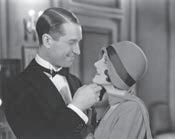


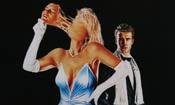


Notables : Best Restaurant, Best Dance Party, and Best Podcast
New : Best Italian Beef, Best Medical Cannabis Dispensary, and Best Block Club
First-Round Voting: 8/15 – 9/13
Run-off Voting: 9/25 – 10/21
Best of Chicago Party: 11/13
We know you love Chicago, now tell us why! Vote for your favorite places, people, and things to do in this city, and they could be featured in the Reader’s special Best Of Chicago issue this November.


Factory
another: the elements of horror become the catalyst for comedic relief and vice versa. Weaving comes alive as a hilarious and deeply macabre play on the “final girl” archetype, and it’s nothing short of cathartic to cheer her on and echo the rage that quickly consumes and empowers her. —CODY CORRALL R, 95 min. ArcLight, Century 12 and CineArts 6, Chatham 14, Cicero Showplace 14, City North 14, Ford City, Lake Theatre
Julie Andrews and Dick Van Dyke star in this live-action feature from 1964, reissued with song captions for audience participation. “While it doesn’t have the so -edged sense of wonder that the Travers books have,” wrote Dave Kehr, “Walt Disney’s version of the Mary Poppins story does manage to avoid the usual saccharine excesses of his live-action work. It goes without saying that the semianimated sequences work best—the chimney-sweeps number may be bastard Broadway (with the aimless athleticism rented from Michael Kidd), but the grace of the effects makes it some kind of classic.” Robert Stevenson directed. G, 140 min. Sun 8/25, noon. Music Box
This vibrant Jamaican sports drama is a crowd-pleaser devoid of false sentimentality, thanks to its disarming young lead, Dale Elliott, and a sturdy supporting cast that includes Lorraine Toussaint and Dennis Titus as his separated parents, Kadeem Wilson as his criminal older brother, and David Alan Grier as his strict coach. Elliott plays Akeem, a Rastafarian high school track and field star whose chaotic home life threatens to derail his athletic goals and his chances at college in America, where he could reunite with his mother, who had le him ten years ago to support her family by working without a permit in California. Director and cowriter (with Robert A. Maylor) Storm Saulter does not sugarcoat the dangers facing vulnerable young men in Jamaica, nor their own behaviors that lead them into trouble. Will Smith and Jada Pinkett Smith are the movie’s executive producers. —ANDREA GRONVALL 114 min. Showing as part of the Black Harvest Film Festival. Fri 8/23, 4:15 PM, and Sun 8/25, 3 PM. Gene Siskel Film Center
Originally aired on British television in 1984, this harrowing drama imagines what would happen to England during and a er a nuclear war. The first half, set against an intensifying standoff between the U.S. and the Soviet Union, is understated but tense. Barry Hines’s script focuses on a young, working-class married couple
in Sheffield as they poignantly try to carry on with life despite the ominous reports. The filmmaking here is functional and earnest a er the fashion of an educational short—the central couple is clearly meant to stand for every average man and woman, and the modest performances (which director Mick Jackson o en presents in close-up) have an anonymous quality that helps inspire cold, clinical reflection. The film’s second half proceeds through short, illustrative scenes depicting how speedily civilization would collapse in nuclear winter, with Hines and Jackson o en abandoning the main characters to consider life on a societal level. The film dares us to think about the unthinkable—just how humanity might revert to barbarism—yet it does so soberly and responsibly.
—BEN SACHS 114 min. Fri 8/23, 4 PM; Sat 8/24, 3 PM; and Mon 8/26, 6 PM. Gene Siskel Film Center
This American Masters documentary about one of our country’s greatest novelists is rich with insights about Blackness in general and the experience of working Black women in particular. The film is most compelling when it addresses Morrison’s life in the 1970s, when she juggled writing, teaching, an editing career (in which she worked with, among others, Angela Davis and Muhammad Ali), and parenthood. Yet there are numerous lessons to be gained from the sections on Morrison’s childhood in working-class Ohio (which inspired much of her fiction) and the popular reception of her books (which speaks to how Black women are regarded in the American public sphere). The interviewees—including Morrison, Davis, Oprah Winfrey, Walter Mosley, and New Yorker critic Hilton Als—are consistently thoughtful and eloquent; at times they convey the musicality and intellectual density of Morrison’s prose. The tone is generally celebratory and, given Morrison’s extraordinary impact on American letters, deservedly so. Timothy Greenfield-Sanders directed. —BEN SACHS PG-13, 120 min. Fri 8/23, 2 and 8:15 PM; Sat 8/24, 3 and 7:45 PM; Sun 8/25, 5 PM; Mon 8/26, 6 PM; Tue 8/27, 8 PM; Wed 8/28, 6 PM; and Thu 8/29, 8 PM. Gene Siskel Film Center
RWorld City in Its Teens: A Report on Chicago
A rarely screened gem of the silent cinema, this fascinating 1931 documentary resulted from a road trip the German photographer and writer Heinrich Hauser made through the American midwest when Chicago’s booming population, fed by the Great Migration of
Get showtimes and see reviews of everything playing this week at chicagoreader.com/movies
Blacks from the south and waves of immigrants from Europe and elsewhere, had reached nearly 3.4 million. In his concentration on architecture and machinery, the director may owe something to Walter Ruttmann’s Berlin: Symphony of a Great City (1927), but Hauser’s style is more forthright: an intertitle in a scene of automation reads, “But where are the people?” His shots of bumperto-bumper traffic along Lake Shore Drive add to the sense of technology winning out over humanity, as do the sequences featuring unemployable, forgotten old men barely getting by during the Depression. But the energy is palpable, from a speedboat on the Chicago River to street life in the Loop and citizen philosophers in Bughouse Square debating the hot topic of Soviet Russia. What appears old somehow feels timeless.
—ANDREA GRONVALL 74 min. 35-mm restored print. Dennis Scott provides live accompaniment. Showing with the 1931 short Halsted Street (see separate listing). Sat 8/24, 2:30 PM. Music Box
Olivier Sarrazin directed this French documentary about pioneering flyer Bessie Coleman, the first African American woman to receive a pilot’s license in 1921. In English and subtitled French. 53 min. Showing as part of the Black Harvest Film Festival. Sat 8/24, 5:15 PM, and Tue 8/27, 6 PM. Gene Siskel Film Center
A 1970 episode of the public television series Black Journal in which a number of guests from differing professions (including poet Nikki Giovanni, anthropologist Vertamae Smart-Grosvenor, and singer Lena Horne) discuss the challenges and realities of being Black women in America. Stan Lathan directed. 52 min. 16-mm archival print. Tue 8/27, 6:30 PM. DuSable Museum of African American History F Coonskin
Ralph Bakshi directed this raucous 1975 part-animated, part-live action satire about an African-American rabbit
from the country who takes over the organized crime syndicate in Harlem. With Philip Thomas, Charles Gordone, Barry White, and Scatman Crothers. R, 100 min. Sat 8/24, 5 PM. Stony Island Arts Bank F
An overnight marathon screening of four films starring Dolly Parton: 9 to 5, The Best Little Whorehouse in Texas, Rhinestone, and Straight Talk, the final two on 35 mm. Sat 8/24, 9 PM-Sun 8/25, 5 AM. Music Box
Produced by and featuring footage drawn from the Chicago-based Media Burn Independent Video Archive, this omnibus work by American and Russian filmmakers Lori Felker, Mikhail Zheleznikov, Dimitri Devyatkin, and Dmitrii Kalashnikov explores the theme of media manipulation and rivalry between the two nations. 65 min. The filmmakers attend the screening. Sat 8/24, 6 PM. Columbia College Film Row Cinema F
Trans musician Gavin Rayna Russom (LCD Soundsystem) directed and scored this 2017 experimental political film that is an impressionistic exploration of contemporary issues as well as the artist’s emerging trans-feminine identity. 60 min. Russom attends the screening. Followed by a panel discussion. Fri 8/23, 6 PM. Chicago Filmmakers
Local filmmaker David Weathersby directed this documentary about house music and the Debauchery Ball, filming the event and its preparations over the course of a year. 71 min. Weathersby attends the screenings. Showing as part of the Black Harvest Film Festival. Fri 8/23 and Wed 8/28, 8:30 PM. Gene Siskel Film Center
A program of seven short films by by Emilie Mannering and Carmine Pierre-Dufour, Aissa Gueye, Brianna Clearly, Jazmin Bryant, Brandon Reese, Ellie Wen, and Eleva Singleton. 74 min. Showing as part of the Black Harvest Film Festival. Sun 8/25, 5:15 PM, and Mon 8/26, 8:15 PM. Gene Siskel Film Center v














World City in Its Teens: A Report on Chicago



This Chicago nonprofit, linked to the Era dance crew, works to spread a local Black subculture that can knit together youth communities.
By JACOB ARNOLD
It’s Wednesday, July 10, and 95 degrees in the shade—of which there’s about four feet on the south end of a worn tennis court in Robert Taylor Park, near State and 48th. But that hasn’t stopped about two dozen kids, mostly girls and mostly between the ages of nine and 16, from gathering on the court to learn dance moves. To get started, the group warms up with stretches and jumping.
Open the Circle, a Chicago nonprofit focused on social entrepreneurship through dance, is holding its second free youth summer camp, Circle Up. It’s a collaboration with OTC’s primary partner, the Era Footwork Crew (who’ve been hired to help instruct the camp), and with two local after-school dance companies: Empiire and Bringing Out Talent (BOT). Each year the south-side camp gives approximately 100 youths the opportunity to “explore dance history, video-making, costume design and DJing” (according to the Open the Circle website) over five weeks of Wednesdays and Fridays from late June through July.
Jamal “Litebulb” Oliver, 29, and Wills Glasspiegel, 36, longtime friends and founding members of the Era, launched Open the Circle with Glasspiegel’s college buddy, Drew Alt, in August 2017. But Litebulb says the roots of the organization reach back to the formation of the Era three years earlier. “Right after we started the Era, we immediately went into, well, we have to find a way to finance the projects that we’re doing, or find the right way to tie the resources back to the community,” he recalls. “We got books like ‘Not-for-Profits for Dummies,’ just trying to figure out how to start this thing from the ground up.”
Footwork was invented by African American youth on Chicago’s west side in the early to mid-90s, evolving from juking and other dance styles. Litebulb caught glimpses of it being performed when he was in third grade, but it wasn’t easy for him to break in and learn the moves—the quick, intricate steps are tough to pick up just by watching. “They would be footworking in the hallways, and at parties there would be juking going on,” Litebulb explains.
“When I got to high school, that’s when I really started to experiment with footwork and try to do it myself. But I was so terrible at it.”
In 2004, during his sophomore year, Litebulb joined Alpha & Omega, a dance crew connected with U-Phi-U, which along with groups such as House-o-Matics had established the footwork style. Litebulb then became a member of 3rd Dimension, led by Latisha Waters, who later founded Empiire. Three years later he joined Terra Squad, and with encouragement from Waters, he established himself as a prominent dancer. Since the formation of the Era in 2014, Litebulb has performed at a showcase by UK Web channel Just Jam in East London, at Womb in Tokyo, and at MoMA in New York; he’s also taught footwork in far-flung
MILLENNIUM PARK DANCE DOWN
Part of YAS! Fest, with performances by the Era Footwork Crew, Bringing Out Talent, Empiire Dance Company, and more, plus music by DJ Corey and DJ Clent. Sat 9/21, noon-7 PM, Millennium Park, 201 E. Randolph, free, all ages
locales such as Kuwait and Peru. At the Circle Up camp, kids have access to Chicago’s preeminent footwork dancers, Litebulb among them—which allows them to learn in just a few weeks what earlier generations took years to develop.
On Friday, July 12, inside Empiire Dance Company’s studio (on E. 75th near Je ery), a group of around 20 kids, about half girls and half boys, form a dance circle in a hot, brightly painted room. Empiire summer instructor Donnetta “LilBit” Jackson, 29, who also teaches tap and dances with the footwork crew Creation, encourages the kids to enter the circle and improvise their first few steps. “Dancing is a conversation. If I don’t understand what you’re trying to say, then I don’t know what to say back to you,” she tells them. A couple
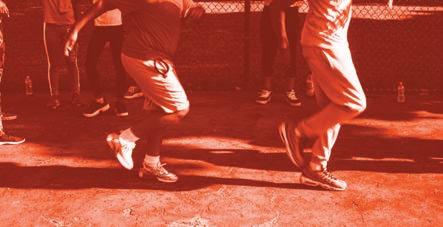


of the shyer kids have to be playfully pulled out into the middle, but they gamely try some moves.
In a cooler, orange-painted studio next door, five three- to five-year-old girls listen raptly as Elisha “Eleelee” Chandler, a 27-year-old footwork instructor hired for the camp by OTC, tells the story of how she danced in the Bud Billiken Parade, joined Terra Squad, and became a footworker. In no time, she has three of the girls fast-stepping to Cajmere’s “Percolator.” “We gotta pull the confidence out of them,” Chandler says, smiling. “But the quiet ones we have to watch out for, because when they come out, whoo!”
For the day’s third session, in a purple room lined with dance-competition trophies, LilBit and Chandler join Litebulb and fellow Era members Brandon “Chief Manny” Calhoun, 28, Jemal “P-Top” DeLa Cruz, 30, and Sterling “Steelo” Lofton, 28. They’re teaching older teens advanced combinations one-on-one, and the space fills with quick, angular movements and the echoes of shoes on hardwood.
The dance curriculum is carefully crafted. “We didn’t want to impose our own style on people. We just wanted people to learn the foundation—that’s how we learned—and make their own styles up and make their own way,” Litebulb says. “We have them doing actual battles right in front of the speaker, and

we let them dance out whatever they can. Just naturally getting them used to dancing and footworking to reinforce that you learn improvisation, because that’s mainly what footwork is. That’s another foundation—it’s improv.”
Footwork generally isn’t choreographed, but dancers at the camp sometimes practice basic steps in unison. When they enter a dance circle, they do their own moves, building on what they’ve learned and responding to the music—frenetic, stuttering, sample-filled tracks by local producers such as DJ Spinn and RP Boo. Footwork music is typically at least 150 beats per minute, having mutated from ghetto house, which tended to hover around 140 BPM.
One of Open the Circle’s primary objectives is to keep footwork alive within the communities where it started. “It’s not the most vibrant scene here in Chicago,” Glasspiegel admits.
“You talk about it being more vibrant in Japan, unfortunately. But a lot of that is just because Rashad died and really left a gaping hole.”
DJ Rashad, founder of the Teklife crew, passed away in April 2014. He was footwork’s global ambassador, crossing cultural boundaries with ease, whether performing at the Pitchfork Music Festival or opening for Chance the Rapper.
Litebulb traveled throughout Europe in 2011 with Rashad and Spinn as part of



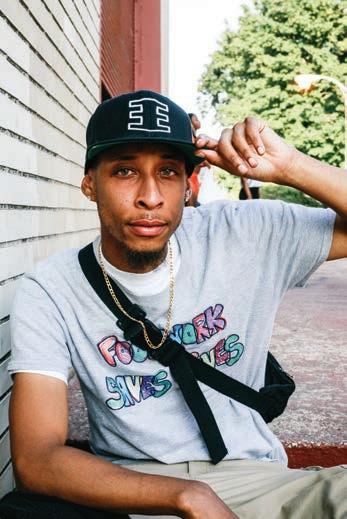
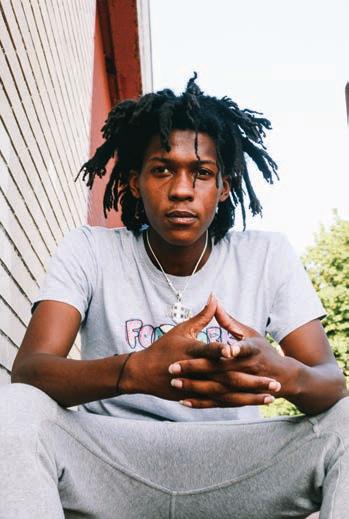
continued from 37
Planet Mu’s footwork tour. “You go overseas to get treated like a king—it’s the best thing in the world. But when you come back home, you’re either a regular person or they don’t even know what you just did,” Litebulb says. “You’re just a nobody again when you’re back at home, because footwork isn’t popularized in Chicago how it used to be.”
Litebulb compares footwork to hip-hop, which evolved from its roots in breakdancing, DJing, and graffiti into a showcase for MCs, since that’s how money could most easily be made. “If you don’t build a foundation for it within the city that you come from, most artists from these cultures leave,” he says. “Because there’s no opportunity in the place they are, and because people don’t recognize them for what they’ve been doing for so long.”
A series of OTC dance downs throughout the summer at Navy Pier, Hamilton Park, Austin Town Hall, and elsewhere has allowed the Circle Up camp participants to come together and battle, while also showcasing choreographed dance routines from new and established teams. The next OTC dance down is at Millennium Park on September 21. Dance companies have been throwing dance downs for years, but traditionally they’re run like talent shows, with prizes for the winners. At Open the Circle’s events, which sometimes involve hundreds of kids, all the participating teams get paid. Open the Circle collaborates with the Chicago Park District and the Department of Cultural A airs and Special Events on logistics.
At this May’s House Music Festival in Millennium Park, the Era taught an afternoon footwork workshop in the grass at Wrigley
Square’s Fam Jam Stage to people of all ages and backgrounds. I tried a few moves myself, and around me, strangers naturally smiled and mingled as they tried to figure out the basics.
As dusk fell, U-Phi-U cofounder Darnell Payne introduced performances by young dance groups, accompanied by sets from juke and ghetto-house producer DJ Clent and his son, DJ Corey. The Era capped off the night with a blistering performance, the crowd holding their phones aloft to capture what they could.
One goal of Open the Circle is to promote gender balance in footwork. As the style evolved in the late 1990s, it became more male dominated and battle focused. Open the Circle makes it a point to include women among the instructors at every Circle Up session, and most of the camp participants are girls.
Last summer, as part of the fashion component of the camp, Open the Circle designed a T-shirt that reads “Footwork saves lives.”
Delorth “Dee-Dee” Stallworth, 28, one of Open the Circle’s newest board members, says that’s literally true.
“I’ve been in the dance community a while, so I know people who could’ve been on the wrong path that footwork changed their life, whether it’s them just doing it as a stress reliever or doing it as a way to stay focused or stay out of trouble,” she explains. “Some people use it as an outlet for their pain, their frustration, things of that nature. I think OTC, it’s helping with it.
“It also builds self-confidence in the youth. So if you’re telling the youth that they’re able to do these things and showing them how it’s done, I feel like that’s important for our communities,” she continues. “You meet
works through the community. We’re uplifting the community and showing what they are, giving the community a voice.” The Instagram accounts of the Era’s members are particularly active, with photos and videos documenting enthused kids gaining confidence week after week.
these lifelong friends. Manny and P-Top, I’ve known them since I was 19, and we’re still good friends, so you build those relationships. You can talk about anything together, you can work on anything together. And then you’re not in these streets just doing anything. I think OTC is really focused on that mission of catching kids in their youth and building on it.”
Stallworth is pursuing a master’s degree in social work at Chicago State University. She grew up with many of the Era’s members on the south side, and she works closely with the crew as an adviser and manager. She hopes to incorporate more mental health resources into Open the Circle’s programs, with traumafocused groups and informational sessions to support communities scarred by violence. Fellow Chicago native and Open the Circle board member Janeca Holbrook, a behavioral health specialist with NextLevel Health, adds her experience in counseling, community treatment, and crisis intervention to the organization.
Open the Circle takes care to uplift people already within footwork culture, rather than impose an outside agenda—Glasspiegel in particular, as a white guy from the north side, is conscious to avoid appropriating or reshaping footwork. Many nonprofits are top-heavy, with large boards drawn from the business community, but most of OTC’s board members are in the field, actively doing the work the organization supports.
“One of our keys is that we show our work through our art very, very well,” Litebulb says. “Whatever people see us recording, it’s true. There’s no flaw or something being staged. Everything is natural. We’re not like typical nonprofits where we’re privatized. We’re a public not-for-profit that is about the community,
“There’s a kind of mom-and-pop approach that we’re taking to the work of social development in Chicago, and I’m really proud of that,” Glasspiegel says. “Footwork was already saving lives in Chicago before Litebulb and I got involved. It was already bringing people together in some of the hardest places to bring people together in this city. It was already giving people self-confidence who were living in environments that were designed to rob them of that. It was giving people a mode of transcendence in situations where they needed transcendence to live. All of that is beyond us. We’re just identifying something good that has been ongoing, that has been keeping people alive, and trying to get other people to recognize the importance of that and the importance of the community that has created this process.”
On Wednesday, July 24, the Circle Up camp’s last day at Robert Taylor Park, DJ and producer Jana Rush shows the BOT dancers how to DJ using a laptop, controller, and turntable. It’s her first time teaching. She explains that sometimes when she’s spinning at a venue with bad monitors or no headphones, she has to match up the audio waveforms by eye. “You’ve got to claim your spot out here. Don’t let nobody tell you what’s not yours and what’s not going to be yours,” Rush tells her students. “That’s my message for you, for females out here. Come out here with the attitude that you own it.”
Bringing Out Talent is run by Shkunna Stewart, 42. Women in her family have been leading dance teams for four generations. “When I think of this summer camp, it’s amazing,” she says. “It’s a great program to show kids how to do other than majorette and hip-hop, show them how to move their legs and stay exercised.”
Bringing Out Talent started working with Open the Circle after Glasspiegel, who’d read about Stewart in the Chicago Defender, messaged her on Facebook last year. Her group consists of 75 children and young adults between the ages of seven and 28. Throughout the year they dance in competitions, some of which BOT hosts. Stewart says parents like the camp because it’s free, it’s something for kids to look forward to, and it keeps them o the street. “It gives them a way to express themselves too. They might come to practice












continued from 38
mad, and they just footwork it on out. It eases them, it calms them,” she explains.
During a brief dance lesson on the tennis court, set to DJ Rashad tracks, Litebulb teaches the advanced group a step called “freaky ghost,” calling out “left, right, drop, wiggle, go.” P-Top explains that there are multiple styles of ghost steps “depending on your energy.” All camp participants receive free T-shirts listing footwork moves: “Erk, skate, dribble, ghost.” P-Top’s four sons—Jemarion, Jemal Jr., and twins Cristen and Tristen, all between ten and 12—are in attendance. Meanwhile, Manny works with the beginners. “It’s a learning experience for us and them,” he says, after wrangling dozens of kids who all want to go in di erent directions.
In addition to the summer camp, Open the Circle is working on two major projects: a documentary and a touring stage performance called In the Wurkz (previewed in 2016). The group intends to fund all three equally, at $120,000 apiece.
Documentation is particularly important in dance—unlike musicians, dancers don’t routinely connect with their audiences via recordings, so other provisions must be made. To that end Glasspiegel, the only nondancer in the Era, is a filmmaker and documentarian. In 2010 and 2011, while reporting on footwork for NPR Music and All Things Considered, he fell in love with the scene. I’d met Glasspiegel in 2009, when he was researching and coproducing the Afropop Worldwide radio documentary Midwest Electric: The Story of Chicago House and Detroit Techno, and we’ve stayed in touch. He’s in the process of writing a dissertation for his PhD at Yale University on the cultural history of footwork.
Open the Circle executive director Drew Alt, 36, was born and raised in Evanston. He and Glasspiegel met at Yale, then collaborated on radio shows for Afropop Worldwide, traveling to Nigeria and Sierra Leone. Alt is currently an independent consultant for the Gates Foundation, working with the vaccine-delivery team to develop system strategies in low- and mid-income countries. He handles many of Open the Circle’s management roles: submitting grant applications, organizing meetings, keeping minutes, maintaining the website, establishing processes for accepting and tracking donations.
Alt loves working with Litebulb and Wills. “It’s a special opportunity because of the deep friendships that we have,” he says. “The way we think about the fact that we’re working with friends is that we have to hold ourselves to even higher standards than if it was a normal job.

The three of us in particular, our skill sets are really deep but in completely di erent areas, so we complement each other really well.”
According to Alt, Open the Circle has raised $233,000 so far, including a major grant from the Field Foundation of Illinois last year and a recently announced CityArts grant from DCASE. He says that since OTC’s inception, it’s incurred $85,000 in expenses, 84 percent of which have been direct payments to 38 members of the footwork community—including DJs, dance groups, and documentarians—for participating in the dance downs, the camps, the stage show, or the upcoming film.
In July, the Era received a $90,000 grant from the New England Foundation for the Arts to produce and tour In the Wurkz. The stage show will open in Chicago with a three-night run at Links Hall on December 13 through 15. Tickets are already on sale.
The phrase “open the circle” has a specific meaning for footwork dancers. “In the parties, if it’s real, real crowded, two footworkers, they’ll grab arms and they’ll swing around in a circle in a real fast motion and knock people out of the way until the circle gets real open so everybody can see,” Litebulb explains. It’s also the name of a DJ Rashad track, and to Litebulb and Wills, it’s a metaphor for sharing the wealth.
The idea of working with children came from a conversation Litebulb had with Chance the Rapper in 2017. They were talking after his private Magnificent Coloring World 2 festival in Chicago, and Litebulb asked what the Era could do to bring more attention to footwork. Earlier this month, the Era taught footwork at Kids of the Kingdom, a summer camp that Chance’s great-grandmother helped start in 1978 (and that his SocialWorks nonprofit has supported for a few years now).
“Chance had the inspiration on us, because he showed that you could do social development and you could do nonprofit work at the same time, interweaved with what you’re doing in the market as an artist,” Glasspiegel explains. “That’s not a common way to do it. Usually, you make your money and then you give back.”
“These kids that we worked with last year, that’s almost a hundred new footworkers,” Litebulb says. “To a person like me, that’s a hundred new footworkers we got into the community that know of or know about footworking at an early age. So we did our job, to a degree. Now it’s time to keep replicating it, over and over and over and over again. Every year, it’s going to be more kids.”
Back at Robert Taylor Park, former Terra Squad member “Queen” Diamond Hardiman, 25, teaches a routine to the entire gathering of kids, beginners and advanced students alike, counting off steps in groups of nine. “I love footwork. It really did save my life,” Hardiman says. She’s been dancing since age 12, and she plans to form her own group to provide kids and adults a “place to feel safe.”
Parents start arriving to pick up their children. Shkunna Stewart’s mother is selling flavored ice o to one side of the tennis court. Glasspiegel hands his camera to a nine-yearold girl named Ladybug, who starts taking photos as a couple of serious dance battles break out. In a circle, kids square o one-onone, staring down their opponents, trying to outdo them with speed and agility. A few kids kick o their flip-flops and dance in socks on the hot, cracked asphalt to speedy, bass-heavy electronic beats. A new generation of footwork dancers is born. v
@gridface

ANDREA MICHELSON
Reader digital reporting intern
Euphoria soundtrack HBO’s Euphoria has been keeping me up at night, and I was sad to see the first season end. Its soundtrack has stuck with me ever since the season finale. Maybe it’s because “Mount Everest” and “All for Us” (both by Labrinth, with Zendaya featured on the latter) conjure memories of the show’s endless drama and trippy visuals. Even if you haven’t seen Euphoria, the intensity of these songs sets the perfect backdrop for a tough workout or study session.
Sarah Marie Young I saw Sarah Marie Young at a Sofar Sounds show in Wicker Park last month, and she blew my mind. Young is a jazz singer, and her classical training is evident in her tight runs and impeccable pitch. But what stood out about her then and continues to impress me now is her vulnerability. She bared her heart with “Dream,” an original song about a past breakup, and a beautifully angsty rendition of Creedence Clearwater Revival’s “Have You Ever Seen the Rain.”
Still Woozy For months now, Oakland oneman band Sven Gamsky, aka Still Woozy, has been one of my go-to artists to listen to
on shuffl e. My current earworms are singles “Lucy” and “Wolfcat,” but his more recent Lately EP also has some solid jams. The only thing I love more than Gamsky’s silky voice is the wonderfully weird art on his albums, which belongs in the MCA.
CLAY FRANKEL
Singer and guitarist in Twin Peaks
Hailu Mergia & Dahlak Band, Wede Harer Guzo One of the best things I’ve ever heard. It puts me in a trance. It has that sweaty and cramped but spirit- soaring sound of great music recorded cheap. It sounds less like a band and more like an organism—some wise and peaceful thing, like an orb of light or a colorful slug. There’s horns and chants and this incredible organ that sounds like it’s falling down a hill on an endless slope, rolling on and on. The title track feels like the explanation to a great cosmic secret that I’ll only understand when the time comes.

Various artists, Driftless Dreamers in Cuca Country, Vol. 2 This is the second Numero Group collection of country songs recorded by obscure Wisconsinites in the 60s. Short sincere spells uttered long ago by forgotten singers. Songs about evil hippies, the bottle, the river, the road. Some have no titles. One song has no credit at all, which is exciting. It adds to the ghostlike charm of this album. Who are these people? Who is Nancy Lee Jordan? And how come she makes me cry?
Monsieur Jeffrey Evans & His C.C. Riders, “The Long, Long Ballad of the Red-Headed Girl” Maybe it’s just a drunken ramble signifying nothing. Or it could be the ax for the frozen sea within us. It makes me feel like a winged creature, powerful yet outcast. The
song’s story is murky: a drug addict, a girl, somebody dies, the girl gets older, somebody marries . . . I haven’t figured it all out yet. I don’t play this a lot because I’m afraid it might burn out, so I pick my moments. Puts me in a hell of a mood.
JACOB DANEMAN
Music publicist at Pitch Perfect PR
Mick Trouble, . . . Here’s the Mick Trouble LP Part of me doesn’t want to give away this album’s secret, but in a way the inside scoop makes it even more impressive. This is a current project by New Yorker Jed Smith, who invented Mick Trouble as a Television Personalities- esque late-70s/early-80s “lost artist.” He gave Trouble a backstory, a musical arc, and a clear style. So many reissue labels claim to have discovered amazing overlooked musicians lost to time, but few people can claim to have invented one.

Edu Lôbo, Edu Lôbo Brazilian songwriter and composer Edu Lôbo released this masterpiece (also called Missa Breve ) in 1973. It’s incredibly eclectic, with soaring choirs, horn sections, and vocal and instrumental experimentation, but it’s rooted in his artistic origins in the world of bossa nova. It’s a revelation (no pun intended, despite songs called “Kyrie” and “Glória”), and I’d put it up against Sgt. Pepper’s any day of the week.
Various artists, AK79 When this compilation was released in 1979, punk had recently made its way to New Zealand (before the Internet, these things sometimes took a minute), inspiring Auckland to present its own version of angry disaffection. It’s a snapshot of New Zealand’s independent scene, and features (among many amazing forgotten acts) one of the first appearances of Chris Knox’s art-punk band Toy Love—along with his previous group, the Enemy, they were like the Sex Pistols or Velvet Underground of NZ, inspiring the formation of a hundred other bands.





Est.1954 Celebratingover toChicago! 61yearsofservice
JANUARY11..................FLABBYHOFFMANSHOW8PM
SEPTEMBER20..... DAVIDQUINN
FEBRUARY23.....MIKEFELTEN
JANUARY12..................AMERICANDRAFT
SEPTEMBER21.....WAGNER&MORSE
SEPTEMBER22.....THE DYNAMOS
JANUARY13..................DJSKIDLICIOUS
JANUARY14.................. TONYDO ROSARIOGROUP
FEBRUARY24..... DARK ROOMMEN WHITEWOLFSONICPRINCESS MOJO49
SEPTEMBER23....WHOLESOMERADIODJNIGHT MURPHYTHOMPSON9:30PM MIKEFELTEN THERONANDRACHELSHOW
JANUARY17.................. JAMIE WAGNER&FRIENDS
JANUARY18..................MIKEFELTON JANUARY19..................SITUATION
FEBRUARY25.....WHOLESOMERADIODJNIGHT
SEPTEMBER24.....RCBIGBAND7PM
FEBRUARY26.....RCBIG BAND7PM
FEBRUARY28.....PETERCASANOVA QUARTET8PM
JANUARY22..................RCBIG BAND7PM
MARCH1............SMILIN’ BOBBYANDTHECLEMTONES
JANUARY24..................PETERCASONOVA QUARTET
JANUARY25..................THEWICK
MARCH2............ICE BOXANDBIGHOUSE
JANUARY26..................THEHEPKATS
SKIPPIN’ ROCK
MARCH3............CHIDITARODAND TARRINGTON10PM
JANUARY27..................THESTRAY BOLTS
MARCH7............ JAMIE WAGNER&FRIENDS
JANUARY28..................WHOLESOMERADIODJNIGHT
Recommended

PICK OF THE WEEK
Hide return with more power than ever on Hell Is Here
John Waite Daniel Correa opens. 8 PM, City Winery, 1200 W. Randolph, $35-50. b
SETH SHER HAS BEEN a fixture of the weirdo Chicago underground for close to two decades, holding down the drums for bands such as Coughs, Ga’an, and Zath, as well as his solo project Psychic Steel. Describing Sher’s drumming as mesmerizing sells his skill set short; his technique combines topsy-turvy prog-rock dexterity with thrash-metal intensity in a head-spinning juxtaposition of heaviness and headiness. That’s why it’s so funny to me that in Hide, his duo with vocalist Heather Gabel (and labor of love for the past five years), Sher plays absolutely no drums—all his beats are programmed. But even via electronics, Sher uses his gift for creating challenging rhythms to create knotty, intense industrial soundscapes, building the perfect foundation for Gabel’s unhinged, confrontational vocals. Hide have typically presented their music through layers of fuzz and sonic dirt, but on the brand-new Hell Is Here (the duo’s second record on Dais), they’ve stripped away that obscurity, instead hammering out each song with a clarity that puts their darkness on vivid display. The drum machines and synths hit harder than ever, while in the foreground Gabel delivers her strongest, most revealing performance yet. —LUCA CIMARUSTI
I’m always amazed at the number of faded 60s and 70s rock stars who underwent complete makeovers and pulled off huge comebacks in the 80s. Woodstock- era icons Steve Winwood and Joe Cocker, the dinosaur prog practitioners in Asia and Genesis, and waning pomp rockers Elton John and John Waite somehow ruled the 80s airwaves, alongside younger, quirkier artists. Born in Lancaster, England, Waite was an original member of cute London boy band the Babys, who formed in 1975 and built buzz with respectably glammy tunes such as 1977’s “Isn’t It Time” and 1978’s “When I Think of You.” The day a er John Lennon was murdered by Mark David Chapman in December 1980, the Babys were playing Cincinnati when Waite was ripped off the stage and injured by a manic fan. A er one more show in Akron, the band canceled the remainder of their U.S. tour and then broke up, leaving the door open for Waite to begin his solo career. His pure pop aesthetics and smooth but gravelly voice put him on par with some of the biggest stars of the day, including Bryan Adams, Eddie Money, and even Rod Stewart, and a er trading in his 70s long locks for a short, spiky cut, he hit in 1982 with the radio-friendly, new-wave-infused power-pop single “Change.” In 1985, the song had a second, even more successful run a er appearing on the Vision Quest soundtrack—it ultimately peaked at 54 on the Billboard Hot 100. But by then, Waite had begun to succumb to the bland excesses of the “me decade” and reached number one with “Missing You,” the soppy lead track from the 1984 album No Brakes. In 1987, Waite was on trend once again when he grew a fearsome multitiered mullet and embraced the ultimate late-80s rock indulgence: the supergroup. The group in question, Bad English, featured former members of the Babys and Neal Schon of Journey, and if I had to compare them to their contemporaries, I’d rank them below the Traveling Wilburys but above Damn Yankees. In 1989, they hit number effin’ one with the tepid power ballad “When I See You Smile,” by pop songwriter Diane Warren—who also supplied smashes for Bryan Adams, Air Supply, N’Sync, Michael Bolton, and Celine Dion. Bad English split in 1991, and Waite has maintained a pretty low profile since the golden plastic-coated 80s. He’s never stopped recording, though—since his 1982 solo debut, Ignition, he’s released nine studio albums, not counting the two recent volumes of the Wooden Heart: Acoustic Anthology series, which feature acoustic renditions of his classic tunes and surprising covers of songs by the likes of Dylan, Donovan, and Richard Thompson. Ultimately, though, it’s the hits that people remember—“Missing You” has lived on, charting for Tina Turner in 1996 and for Brooks & Dunn in 1999, and Waite even broke into the country charts in 2006 with a duet version featuring bluegrass star Alison Krauss. You’ll definitely hear that tune at this rare Chicago performance, where he’s backed by his band the Axemen— though he’ll play a diverse set that does justice to his decades-spanning career.
—STEVE
KRAKOW
Quebe Sisters 8 PM, FitzGerald’s, 6615 Roosevelt Rd., Berwyn, $20. 21+
The Quebe Sisters bill themselves as progressive western swing, but in most respects they sound more old-timey than the country-jazz acts of the 30s and 40s that inspire them. Though the “King of Western Swing,” Bob Wills, included traditionally noncountry instruments such as horns and electric guitar in his band and played tunes by Duke Ellington and Count Basie, the Quebe sisters make music more in line with the familiar 50s and 60s honkytonk tropes that were influenced by Wills’s sound. The five-piece group—fiddle-playing sisters Grace, Sophia, and Hula Quebe, guitarist Simon Stipp, and upright bassist Daniel Parr—perform a mix of traditional standards (Bob Wills’s “I Can’t Go On This Way,” Hank Williams’s “Cold, Cold Heart”) and new songs that sound like traditional standards. The highlight of the latter is their signature tune, “Every Which-a-Way,” which is the title track on their 2014 self-released album. The beat provided by Stipp and Parr doesn’t thunder with the propulsion of Wills’s drum-anchored outfits, but it’ll still get your feet tapping while the Quebes alternate between driving triple-fiddle interludes and rollicking Andrews Sisters-style vocals. Though the sisters are supposedly singing to a lover when they harmonize “Every which-a-way you turn, it seems you’re right beside me,” they could just as easily be talking about their favorite old country styles—they still carry a torch for that music, no matter how many others have forgotten it. And while the Quebe Sisters’ take on these classic sounds isn’t as innovative as they claim, it’s still fun to listen to them and let yourself be transported to the past. —NOAH BERLATSKY

Call Super Sevron and Sold open. 10 PM, Smart Bar, 3730 N. Clark, $15-$20. 21+
In a 2017 Resident Advisor feature, Berlin-based dance producer Joseph Seaton recalled the eureka
moment he had in the 2000s while watching Detroit techno champion Jeff Mills spin at London club the End. “When he played all night, he would play all different kinds of music,” Seaton said. “I remember him playing Beastie Boys in the End, the Sugarhill Gang for fuck’s sake. I thought, ‘Right, so techno is all of that.’” Seaton records under a variety of names (Ondo Fudd, Elmer Crumb, JR), and he’s best known for his primary project, Call Super. You could categorize his work as techno, but it sometimes sounds like he’s exploring ways to graft the genre’s characteristic percussive rush onto more abstract music. On Call Super’s most recent album, the 2017 Houndstooth release Arpo (which includes clarinet and oboe from his father, retired art professor David Seaton), he introduces rhythms from such odd angles that at first it’s a challenge to detect a danceable pattern. On “Ok Werkmeister,” clusters of mutated drums scatter across wobbly synths like a tossed handful of jacks, and on “Ekko Ink,” hypnotizing typewriter-like clicks give way to delicate, fizzy polyrhythms. But Seaton mostly uses those experimental touches to increase the power of his grooves, which are unshakably tenacious once they emerge. In June, he dropped the relatively straightforward-sounding Call Super 12-inch “All We Have Is Speed” b/w “All We Have Is Glue” (Peach Discs), whose A side opens with a driving four-on-thefloor beat—but then Seaton layers on echoing J
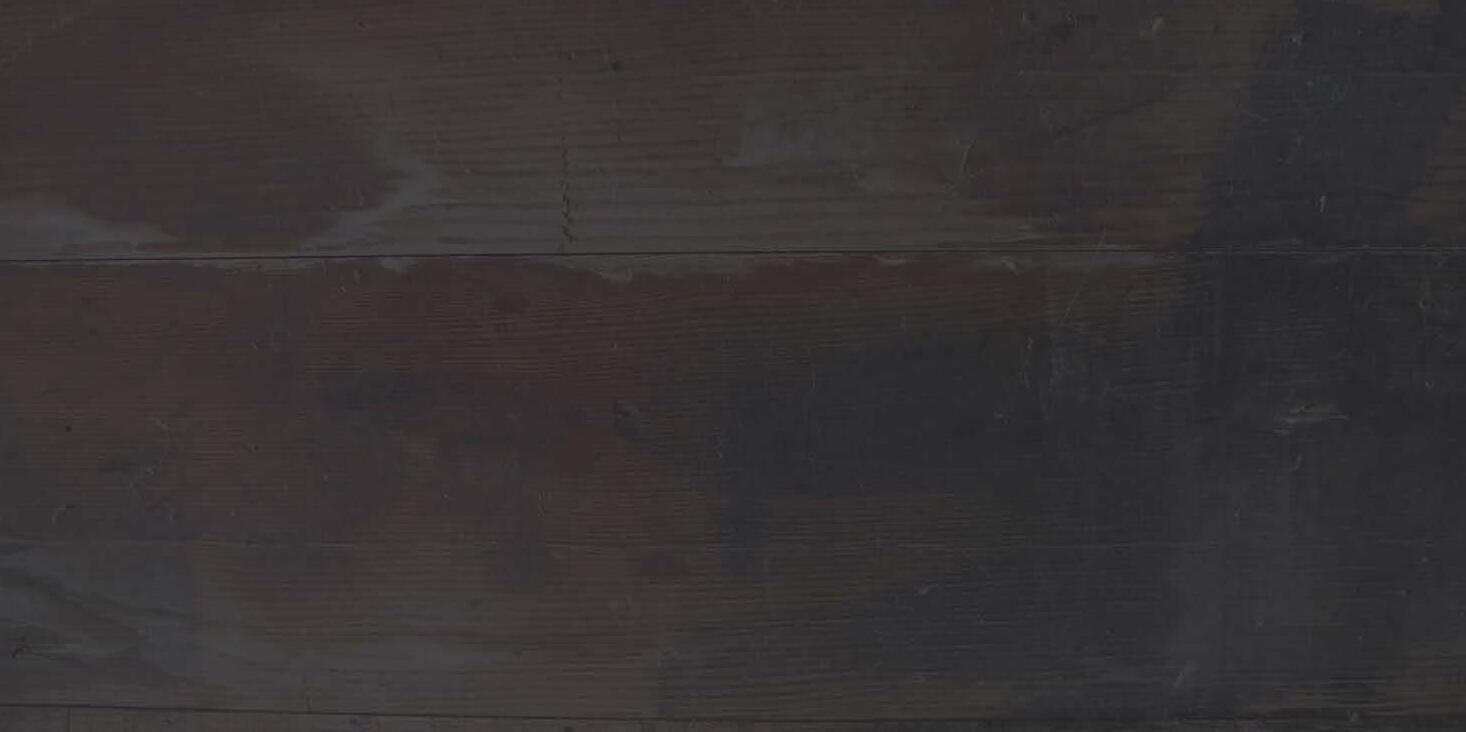









clangs, snippets of horror synths, and other spooky sounds to keep dancers on their toes. —LEOR GALIL
Family Reunion Sports Boyfriend and Eleeza open. 8 PM, Schubas, 3159 N. Southport, $12. b
Singer-songwriter Jackie Carlson, who records and performs as Family Reunion, isn’t one of those image-conscious Chicago indie musicians who tries to hide the fact that she grew up in the north suburbs. “Where I’m actually from, Waukegan, doesn’t really have a music scene,” she told music blog Born Loser last year. “I love playing in Chicago and all of the people I have been able to meet at these shows. It’s an amazing community.” Carlson contributes to the local scene as part of a new wave of musicians who weave together indie-pop and hip-hop; she’s collaborated with rappers such as Ric Wilson (on ABC talk show Windy City Live) and Adot and o en appears on bills that cross stylistic boundaries (in May, for example, she played Hoist Fest, which also featured R&B artist Jordanna, rapper-singer Rich Jones, and indie rocker Uma Bloo). Carlson treats genres like toppings at a self-serve Froyo bar; she sprinkles unhurried R&B guitar, ethereal vocal harmonies, and loosely swinging hip-hop percussion over her dreamy electronics-based sound without compromising its balance of flavors. On the recent single “See You,” she sings a blunt romantic plea in a quivering voice atop a squealing G-funk synth and languid, skeletal percussion, a le -field combination that manages to sound heartfelt. A er finishing high school at 17, Carlson planned to study jazz vocals at the University of Illinois at Chicago, but instead of pursuing college, she’s been focusing on making music while juggling service jobs. This headlining set comes just days a er she turns 20, so arrive ready to party along with her. —LEOR GALIL
Converge Cloud Nothings and Djunah open. 7 PM, House of Vans, 113 N. Elizabeth. b F
Guitarist Kurt Ballou and vocalist Jacob Bannon formed metalcore outfit Converge in 1990, when they were still in their teens. By 2001, they’d changed the landscape of hardcore and heavy music with Jane Doe, their crucial fourth LP and the first to feature drumming dynamo Ben Koller and blunt-force bassist Nate Newton. Nearly 20 years removed from that pivotal album, they remain an absolute sonic cyclone and continue to break new ground in their genre. And though all four core members are involved in projects outside the group, Converge still produce new releases at a respectable clip—most recently last year’s Beautiful Ruin EP (Deathwish/Epitaph), a set of outtakes from their 2017 LP, The Dusk in Us, that rips through four short tracks with violent speed and raw power. By contrast, The Dusk in Us mixes up blazing hardcore, midtempo sludge, and melancholy atmospheres, better reflecting the band’s balance. Converge are curating this show at House of Vans, and they’re bringing along lo-fi power poppers Cloud Nothings and local noise-rock duo Djunah. Bannon will also provide a live art experience (he’s a talented visual

artist and printmaker who handles the band’s album art) alongside illustrator and tattoo artist Thomas Hooper and print shop Burlesque of North America. The show is first come, first served, and lines at House of Vans shows usually wrap around the block—be sure to get there early for what should be a rad night.
—SCOTT MORROW
Hide See Pick of the Week, page 42. Hogg, Grün Wasser, and Good Fuck open. 8:30 PM, Empty Bottle, 1035 N. Western, $12. 21+
Pearlfest Nona Hendryx, Robert Glasper, Terri Lyne Carrington, Lizz Wright, and Avery Sunshine headline. 1-10 PM (headliners at 7 PM), 39th Street Beach, 1199 E. Oakwood. b F
Little Black Pearl (LBP) was founded in 1994 by Monica Haslip, who began inviting neighborhood youth to gather at her south-side home to learn about art, community history, and empowerment. Since then, the organization has grown into an essential Chicago cultural institution that provides a variety of arts, culture, and entrepreneurship programs for youth, families, and adults throughout Kenwood, Oakland, Bronzeville, Woodlawn, and beyond. Today, LBP’s Art & Design Center is based in a 40,000-square-foot facility on 47th Street, which also houses the organization’s tuition-free CPS Options high school, the Little Black Pearl Art & Design Academy (LBPA). In 2015, LBP also launched Pearlfest, a free lakefront music and culture festival. This year’s Pearlfest celebrates the organization’s 25th anniversary with a solid lineup of R&B and jazz artists, including jazz drummer, composer, and longtime LBP supporter Terri Lyne Carrington, who became the first woman to win the Grammy for best jazz instrumental album with 2013’s Money Jungle: Provocative in Blue. Capping the night (and hosting the whole thing) is legendary singer Nona Hendryx, whose boundary-pushing and commanding presence has made her a soughtafter collaborator in pop, rock, and funk for more than 50 years. Her live performances showcase her range, mixing up songs from her girl-group days with Patti LaBelle & the Bluebelles (which morphed into the glammy funk trio Labelle in the 70s) and the downtown art-rock, dance-pop, and experimental sounds she’s explored in her solo career (in
2017 she released a Captain Bee eart covers album with guitarist Gary Lucas). Pearlfest’s other headliners, a er a full day of workshops and local performers, are Atlanta singer-songwriter Avery Sunshine, whose neosoul songs exuberantly explore the joy and complexities of middle-aged relationships; sophisticated, gospel-tinged jazz singer Lizz Wright; and Black Radio pianist and producer Robert Glasper.
—SALEM COLLO-JULIN
Cooper-Moore Part of the Dog/Days series; see page 45. Lesser Lakes Trio opens. 9 PM, Hungry Brain, 2319 W. Belmont, 21+. F
Born Gene Ashton in 1946, Cooper-Moore grew up in a house built by his great-grandfather in the Virginia hills west of Washington, D.C. Though he’s associated with New York City’s ecstatic jazz scene, where he’s played piano since the 1970s alongside the likes of saxophonist David S. Ware and bassist William Parker, rural self-reliance remains at the root of everything he does. He first learned improvisation as a child playing piano in the local Baptist church, and he’s taken the concept beyond music to the tools he uses to make it—if there’s no instrument on hand, he can create one. He’s equally at home playing a Steinway grand piano at the Vision Festival and plucking a harp made from the handle of a gardening hoe and some fishing line on a subway platform. And while his latest recording, a self-titled duo with tenor saxophonist Stephen Gauci, delivers bracing free jazz, if you skim his discography you’ll find him playing funky bass lines on an amplified diddley-bow with the trio Digital Primitives, matching percussive patterns with Hamid Drake behind Assif Tsahar’s snaky bass clarinet on the 2005 album Lost Brother (Hopscotch), and singing the blues about the aging process on one of the solo releases he sells on his website. But in any setting, his guiding aesthetic is a determination to instigate an authentic emotional exchange between him and the audience. Since he’s playing at a venue with a piano as part of Dog/Days—a week of free concerts that precedes the Chicago Jazz Festival—we’re bound to hear a bit of jazz, but here’s hoping that CooperMoore mixes in some of the other tools in his bag of tricks. —BILL
Find more music listings at chicagoreader.com/soundboard
Anagram Festival
The inaugural Anagram Festival features rising Chicago improvisers and experimental musicians, with sets from Mobile Vanguard, the Alejandro Urzagaste Trio, and more. Mon 8/26 and Tue 8/27, 9 PM, Elastic Arts, 3429 W. Diversey, $10. b
Dog/Days
This jazz and improvised-music series leads into the Jazz Festival with a mix of free and paid concerts, including sets by Je Parker, Kidd Jordan, Marc Ribot, and Cooper-Moore (see page 44). Thu 8/22 through Sun 9/1. Shows at Constellation (3111 N. Western, 18+) and the Hungry Brain (2319 Belmont, 21+), $10-$15 or free.
Pearlfest
See page 44. Sat 8/24, 1-10 PM, 39th Street Beach, 1199 E. Oakwood. b F
Pop Up Nu Jazz Festival
Soak up some jazz and stock up on snacks at this parking-lot fest that includes Thaddeus Tukes, Sam Trump, the Englewood/Soweto Exchange, and the Young Masters Ensemble led by Ernest Dawkins. Mon 8/26, 5 PM, Whole Foods, 832 W. 63rd. b F
Skokie’s BackLot Bash
This family-friendly fest celebrates the days when silent films were shot on downtown Skokie streets. Its three days of music feature performances from War, the Smithereens featuring Marshall Crenshaw, the Imperial Sound, Material Issue, and many more. Fri 8/23, 6-10 PM; Sat 8/24, 11:45 AM-10 PM; and Sun 8/25, 1-8 PM, Oakton between Lincoln and Laramie, Skokie. b F
Villapalooza
Spanning seven locations and several blocks, Villapalooza celebrates Latinx culture with food, artisans, Aztec dancers, and music, including sets from Malafacha, New York’s Ratas en Zelo, and Jose Duster. Sat 8/24, noon-11 PM, and Sun 8/25, noon-8 PM, multiple locations on or near 26th St. in Little Village. b F
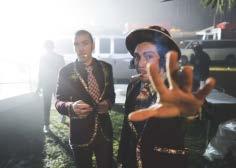



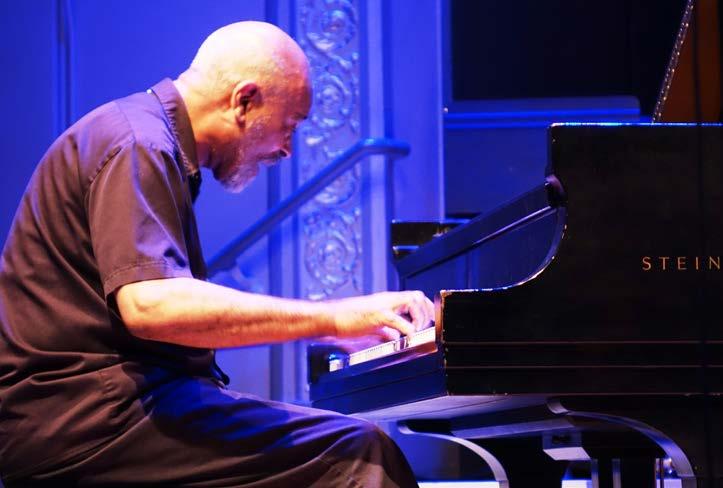



ROsie Flores 7 PM, Szold Music & Dance Hall at the Old Town School of Folk Music, 4545 N. Lincoln, $25. b
Ever since her self-titled 1987 debut, Rosie Flores has straddled the line between country and rockabilly. She may add or remove the big beat for emphasis, but she always keeps a distinct honkytonk flavor. But on her recent album, February’s Simple Case of the Blues, the singer-guitarist dives into the blues, and rather than coming across like she’s tinkering with something new, she sounds as natural and unaffected as if she’s been playing it all her life. Unlike many nonblues artists who make R&Bflavored albums (think Aerosmith’s 2004 LP, Honkin’ on Bobo), Flores doesn’t fall back on genre cliches, which means no extended guitar solos, no duets with “very special guests,” and no cover versions of “Take Me to the River.” Instead she comes up with something closer to the eclecticism of Charlie Rich, where the blues influence is fairly subtle but heartfelt. Flores’s taste in R&B appears to come from the same era as her country-and- western records, and it fits her well. She doesn’t do full-on jump blues but rather sticks to territory reminiscent of the 1950s sounds from artists such as Ruth Brown. Flores doesn’t try to walk in someone else’s shoes as she aims for the sweet spot where country and blues converge: Simple Case of the Blues is for anyone who’s ever wished Brenda Lee would’ve waxed an R&B album in 1960, and that’s a compliment. —JAMES
PORTER
9/18: EMILY WOLFE, 9/19: 312UNES PRESENTS WOLF EYES, 9/20: DREAMGIRL, 9/20-9/21 @ GOOSE ISLAND BEER CO: 312 BLOCK PARTY
9/27-28 @
&
Prince Daddy & The Hyena Retirement Party and Kississippi open. 7 PM, Beat Kitchen, 2100 W. Belmont, $13. b
Prince Daddy & the Hyena’s second album, June’s Cosmic Thrill Seekers, explores a twentysomething’s recovery from an acid trip in a three-part framework drawn in part from The Wizard of Oz . Kory Gregory, who fronts the Albany emo band, told the Fader that he took inspiration for the ambitious record from concept albums and rock operas such as My Chemical Romance’s The Black Parade, Titus Andronicus’s The Monitor, and Green Day’s American Idiot. Underground emo and pop punk are no strangers to grand, well-crafted gestures either, and Prince Daddy’s new LP fits comfortably alongside contemporary classics from those scenes: the Hotelier’s expansive, life-affirming Goodness , Foxing’s go-for-broke pop monument Nearer My God, nearly everything the World Is a Beautiful Place has ever released, and even Oso Oso’s small-town survey The Yunahon Mixtape. Prince Daddy distinguish themselves among this company by partaking of an unusual recent variation in the sound of underground emo—a hook-centric, o en goofy take sometimes called “sparklepunk.” The band’s sloppily euphoric style might be the best sonic approach to an album about an acid trip—Gregory started writing the material about four years ago, a er an odd LSD experience of his own. Prince Daddy have grown more creative with their songwriting since their first record, 2016’s I Thought You Didn’t Even Like Leaving, and have clearly worked to make every second of Cosmic Thrill Seekers feel intentional. On their debut, they performed so roughly they sometimes sounded like they were about to flail themselves to pieces, but even during the hairiest parts of the new album they’re obviously in control. Whether you’re up for a metaphor-heavy story of a 90s baby returning from an altered state or you just want sick, compact pop-punk riffs, Cosmic Thrill Seekers delivers in spades. On “Breather.” when the call-and-response guitars drop into unison just as Gregory leaps from throaty howls to a honeyed falsetto, Prince Daddy & the Hyena sound capable of even more profound journeys. —LEOR GALIL v

A furry ear to the ground of the local music scene
GOSSIP WOLF CONCURS with the Reader critics who’ve heaped praise on local trio Dead Rider : they’ve been hailed for transforming “classic rock and radio-friendly dance rock into sounds that could induce nausea” and described as “one of today’s finest outposts of Weird America.” The band’s awesome new Drag City single, “The Sale,” is a thumping ode to a used 1969 Buick Riviera—imagine a chopped-and-screwed take on ZZ Top’s “Woke Up With Wood” that’s uncannily similar to the 1980s late-night TV commercials of long-deceased Elk Grove Village “Singing Ford Dealer” Harry Schmerler (maybe you remember his tagline: “Rocka-bye your baby!”). On Saturday, August 24 , Dead Rider return from a handful of east-coast dates to hit the Hideout
Gossip Wolf got hooked on local trombonist, composer, and beat maker Christopher Arthur Misch-Bloxdorf, aka Artie Do Good , after he opened for beloved underground rapper Rory Ferreira (then performing as Milo) at the Hideout in 2017. Artie has put out music through Ferreira’s Ruby Yacht label, and last week he self-released the EP A Message From the Lighthouse, whose dreamy instrumentals thread together delicate indie pop and oddball boom-bap hip-hop. Artie sings a little on the EP, but his guests cover most of the vocals: R&B singer Ehiorobo and rappers Pink Navel and SB the Moor
Ever wanted to see your favorite local rapper hooping? On Saturday, August 24, producer and DJ Sunny Woodz hosts a celebrity back-to-school basketball game at Urban Prep Charter Academy in Bronzeville (521 E. 35th). Woodz will play on the “black team,” alongside the likes of Chimeka, YP, Supa Bwe, and Gzus Piece; the “white team” includes Vic Spencer, Illi (formerly the Boy Illinois), Stunt Taylor , and Clark Airlines. Woodz and friends will also give away more than 200 backpacks to those in need. It’s all free; doors open at noon and the game starts at 12:45 PM. —J.R. NELSON AND LEOR GALIL
Got a tip? Tweet @Gossip_Wolf or e-mail gossipwolf@chicagoreader.com.
CHICAGO SHOWS YOU SHOULD KNOW ABOUT IN THE
b ALL AGES F

12th Planet, Dogma 12/27, 8 PM, Concord Music Hall, 18+
Absolutely Not, S-E-R-V-I-C-E, Wad 10/10, 8:30 PM, Empty Bottle
Rahim AlHaj & Sahba Motallebi 10/19, 8 PM, Szold Hall, Old Town School of Folk Music, on sale Fri 8/23, 9 AM b Augustana 11/19, 7 PM, Subterranean, 17+
Battles 12/8, 8 PM, Lincoln Hall, 18+
Mary J. Blige 9/13, 8 PM, Ravinia Festival, Highland Park b Blood Cultures 11/27, 9 PM, Schubas, 18+
Born Days, Den-Mate, 8-Bit Creeps, Boyscott 9/18, 9:30 PM, Sleeping Village Boston Manor, Microwave, Heart Attack Man, Selfish Things 12/15, 6:20 PM, Bottom Lounge b Bush Tetras 9/19, 8 PM, Szold Hall, Old Town School of Folk Music b
Chicago Celebrates Sondheim with Susan Werner, Robert Sims, Paul Marinaro, and more 11/16, 8 PM, Auditorium Theatre b
Chicago Jazz Festival with Art Ensemble of Chicago, Christian McBride, and more 8/29-9/1, 11 AM, Chicago Cultural Center and Millennium Park F b
Chicago Philharmonic presents Queens of Jazz 10/27, noon, City Winery, on sale Fri 8/23, noon b
Dirtwire 9/5, 9 PM, Sleeping Village Dirty Green, Westerlees 8/29, 8 PM, FitzGerald’s, Berwyn Discus, Claude, Hue, Pool Holograph DJs 9/23, 8:30 PM, Empty Bottle F
Double Hex Records showcase with Daisychain, Wilde 10/8, 8 PM, Schubas, 18+ Drug Apartments 9/25, 9 PM, Schubas, 18+
Dwele 11/29, 7 and 10 PM, City Winery, on sale Fri 8/23, noon b
Flux Pavilion, KTRL, and more 8/30, 11 PM, Concord Music Hall, 18+
Sonny Fodera & Dom Dolla 10/31, 10 PM, Sound-Bar
Forever Deaf Fest 12/6-12/7, 8 PM, Beat Kitchen, 17+ Freddy Jones Band 11/29, 7:30 PM, Park West, 18+ Gentle Heat, Bombats 9/3, 8:30 PM, Empty Bottle F Goon 11/21, 8:30 PM, Empty Bottle, on sale Fri 8/23, 9 AM Gramatik, Opiuo, Russ Liquid, Balkan Bump 11/16, 9 PM, Riviera Theatre, 18+
Grun Wasser, Ariel Zetina, Material, Cid Ikarus 10/3, 8 PM, Sleeping Village Jack Harlow 10/18, 8:30 PM, Bottom Lounge, 17+
Richie Hawtin 10/4, 10 PM, Concord Music Hall, 18+ Ernie Hendrickson, Big Sadie 9/13, 8:30 PM, FitzGerald’s, Berwyn
Honey Dijon, Harry Cross 10/12, 10 PM, Smart Bar Jauz, Ship Wrek, Ōsé 9/1, 8 PM, Concord Music Hall, 18+ Jpegmafia, Butch Dawson 10/29, 8 PM, Bottom Lounge, 17+
Kesha 9/8, 7:30 PM, Ravinia Festival, Highland Park b King Diamond, Uncle Acid & the Deadbeats, Idle Hands 11/18, 7 PM, Riviera Theatre, on sale Fri 8/23, 10 AM, 18+
Lenny Kravitz 9/7, 7:30 PM, Ravinia Festival, Highland Park b La Dispute, Touche Amore, Empath 11/18, 7 PM, Metro, on
Reelin’ and Rockin’ screening of Center of Nowhere, North Berwyn Rhythm & Soul Organization 9/11, 7 PM, FitzGerald’s, Berwyn Dave Rempis Quartet, ~Nois 8/29, 6 PM, Fred Anderson Park F b Rezn x Lume Collaboration 10/12, 8:30 PM, Empty Bottle Rod Tuffcurls & the Bench Press 10/12, 9 PM, the Vic, 18+ Steely Dan, Dinosaur Exhibit 9/1-9/2, 7:30 PM, Ravinia Festival, Highland Park b Sweet 9/5, 7:30 PM, Arcada Theatre, Saint Charles b Tchami, Birthdayy Partyy, Ayoo 8/31, 11 PM, Concord Music Hall, 18+
Never miss a show again. Sign up for the newsletter at chicagoreader. com/early
sale Fri 8/23, 9 AM b Lido 10/31, 9:30 PM, Sleeping Village
Lost Kings, Martin Jensen 12/7, 10 PM, Bottom Lounge, on sale Fri 8/23, 10 AM, 17+ Malci, Free Snacks, Musa Reems 9/8, 9 PM, Sleeping Village Del McCoury Band 11/16, 8 PM, Maurer Hall, Old Town School of Folk Music, on sale Fri 8/23, 9 AM b
Mighty O.A.R., American Authors, Rozzi 8/30, 6:30 PM, Ravinia Festival, Highland Park b Millennium Park Dance Down . the Era Footwork Crew, Bringing Out Talent, Empiire Dance Company, and more with music by DJ Corey, DJ Clent 9/21, noon, Millennium Park Fb Nick Moss with Dennis Gruenling 8/30, 10 PM, FitzGerald’s, Berwyn Tunde Olaniran 10/4, 8:30 PM, Schubas, 18+ P-Lo, Guapdad 4000, Aux Chord & Kawasaki 10/17, 7 PM, Subterranean, 17+ Pachanga Block Party with Grupo Rimel, Freddy Favela y Sus Compas de Durango, and more 9/1, 1 PM, Municipal Bar + Dining Co Charlie Parr 11/8, 8:30 PM, Schubas Plack Blague (live set), Harry Cross, Him Hun, Club Politix 10/11, 10 PM, Smart Bar Plain White T’s, Mowgli’s, New Politics 11/12, 7:30 PM, Metro, on sale Fri 8/23, 10 AM, 18+ Quinn Christopherson, Morgan Powers, Max Subar 9/22, 8 PM, Sleeping Village Radkey 10/1, 7 PM, Cobra Lounge b Ramonda Hammer 8/29, 7:30 PM, GMan Tavern
A Tribute to Buddy Holly & the Crickets with Zachary Stevenson and more 9/7, 8 PM, FitzGerald’s, Berwyn Violent Femmes 9/13, 10 PM, Concord Music Hall, 17+ Wale 10/17, 6 PM, Concord Music Hall b Summer Walker, Melii 11/26, 7:30 PM, Riviera Theatre, on sale Fri 8/23, 10 AM, 18+ Waterparks 11/29, 7:30 PM, the Vic, on sale Fri 8/23, 10 AM b Woolgathering Records showcase with Pollinator, Mannerist, Open Water as a Child, Headlands 8/30, 9 PM, Sleeping Village F Wovenhand, Jaye Jayle, God Damn Your Eyes 9/1, 8 PM, Martyrs’ Miguel Zenón & Dan Tepfer 8/31, 5 PM, Bennett-Gordon Hall, Ravinia Festival, Highland Park b
Adam Ant, Glam Skanks 9/7, 8 PM, the Vic, moved to the Vic; tickets purchased for the Riviera will be honored, 18+ Clairo, Beabadoobee, Hello Yello 9/28-9/29, 6:30 PM, Metro, 9/29 show added b Teen Top 10/30, 7:30 PM, Concord Music Hall, new on sale date Fri 8/23, 11 AM, 17+ Tycho, Poolside 9/15, 8 PM, Riviera Theatre, moved to the Riviera; tickets purchased for the Aragon will be honored, 18+
Art Alexakis of Everclear 10/8, 8 PM, SPACE, Evanston b Allday, Mallrat 9/18, 6:30 PM, Subterranean b Bottle Rockets 9/27, 7 PM, FitzGerald’s, Berwyn Holly Bowling 9/8, 7:30 PM, SPACE, Evanston b Brain Tentacles, Child Bite 9/4, 8:30 PM, Empty Bottle Break Science, Marvel Years 10/18, 8 PM, Chop Shop, 18+ Ciara 10/4, 7:30 PM, Park West b
Cigarettes A er Sex 10/16, 8:30 PM, Thalia Hall, 17+ Sabrina Claudio, Gallant 10/11, 7:30 PM, Riviera Theatre b Slaid Cleaves 10/17, 8 PM, FitzGerald’s, Berwyn Crumb, Divino Nino, Shormey 11/6, 7 PM, Thalia Hall b Cuco, Kaina 9/22, 7 PM, Aragon Ballroom b Joe Hertler & the Rainbow Seekers 9/5, 9 PM, Lincoln Hall, 18+
Lilbootycall 9/3, 7 PM, Subterranean b Lingua Ignota 9/9, 8:30 PM, Empty Bottle Little Feat 10/13, 8 PM, the Vic, 18+ Melvins, Redd Kross 9/26, 7:30 PM, Metro, 18+ Chrisette Michele 9/27, 8 PM, Patio Theater Michigander, Emily Blue, Edwards 10/11, 8 PM, Lincoln Hall, 18+
Anaïs Mitchell 10/18, 10 PM, SPACE, Evanston b Muna, Chelsea Jade 10/17, 7:30 PM, Logan Square Auditorium b Frank Orrall 9/7, 8 PM, City Winery b Pagan Altar, High Spirits, Cauchemar 8/31, 8 PM, Reggies’ Music Joint
Carl Palmer’s ELP Legacy 11/1, 7 PM, Reggies’ Rock Club, 17+ Parlor Mob, Deal Casino 10/19, 8 PM, Martyrs’ CeCe Peniston 9/22, 8 PM, City Winery b Pentagram, Howling Giant, Black Road 9/1, 7 PM, Reggies’ Rock Club, 17+ Lee “Scratch” Perry & Subatomic Sound System 9/20, 8 PM, Subterranean Maisie Peters, Jack Gray 10/16, 7 PM, Schubas b Pink Sweats 9/14, 7 PM, Metro b Vivian Girls 11/1-11/2, 8:30 PM, Empty Bottle Chely Wright, Alice Peacock 9/11, 8 PM, City Winery b Yoke Lore 10/19, 9 PM, Bottom Lounge, 17+ Young Thug, Machine Gun Kelly 10/25, 8 PM, Credit Union 1 Arena at UIC b Yungblud, Missio 10/4, 7:30 PM, the Vic b Zimmer 12/11, 8 PM, Sleeping Village ZZ Top, Cheap Trick 9/7, 7 PM, Hollywood Casino Amphitheatre, Tinley Park b v

A would-be dynamic duo, a wannabe male unicorn, and more seek guidance from Uncle Dan.
By DAN SAVAGE
Q : I took Molly with my best bud. We wound up cuddling and telling each other everything. We didn’t mess around—we’re both straight guys—but one of the things I told him is that I would much rather eat pussy than fuck, and one of the things he told me is that he’s not at all into eating pussy and pretty much only likes to fuck. I think we’d make a great team: We’re both good-looking, athletic dudes and we should find a woman who loves to have her pussy eaten and loves to get fucked. I would go down on her and get her going (and coming), then he steps in and dicks her down (and gets her off one last time). What say you? —U LTIMATE PACKAGE DEAL
A : I would say, “FUCK YES!” if I were a woman, UPD, which I’m not. And while I can’t promise you every woman will have the same reaction I did, some women most definitely will.
Q : I’m a male in my late 50s. I went to a urologist for my erection problem, which was helped with ED medication. But orgasms are very hard to achieve, and the ED medication does not seem to make orgasms any easier to have. My girlfriend appreciates the erections, but I would also like to climax. This is very frustrating. Any advice? —P ILLS INHIBITING LUSTY LOADS
A : Tits and dicks both sag with age, which is why pushup bras and push-up pills were invented. And while ED meds do make it easier for a guy to get an erection, they can also make it more difficult for a guy to climax. Upside: you last longer. Downside: you may sometimes have sex without climaxing. Or you can shi your perspective and try to see this downside as a secret upside: sometimes you get to enjoy sex without climaxing—and next time, when you do climax, you’ll blow a bigger load.
Q : I am a bisexual man who’s active in the sex-positive community, and I love playing with couples. I was updating my Feeld profile to reflect this desire, but I realized there’s no consistent term for a male unicorn. So I listed “Male/Stag/Stallion/ Minotaur/Pegasus,” various terms I’ve seen people use. WTF, it shouldn’t require a whole line in my profile to run through all the terms! As the person who famously crowdsourced “pegging,” I was hoping you could work your magic and get everyone to agree on a nonbinary term that works for all sexual identities. —H AVING ONE RELIABLE NAME
A : What’s wrong with “unicorn”? Unicorns—the mythical beasts—can be female, male, or, I suppose, genderless or genderfluid. They can be anything we want them to be, HORN, since we made them up.
And while the term first came into use to describe bi women who weren’t just open to having sex with an established, oppositesex couple, but open to committing to a couple and forming a poly triad, there’s no reason men and/ or nonbinary folks who are interested in the same— hooking up with and forming relationships with established couples—couldn’t identify as unicorns too. But are you a unicorn? People began to call those bi women “unicorns” because they were hard to find and everyone, it seemed, was looking for one. People interested in simply playing with couples aren’t anywhere near as hard to find.
Q : I’ve recently begun to experiment with a few kinky friends. One of them is a voyeur who is super into bukkake. I’d be open to a group bukkake scene, but how do I avoid contracting an STI? —A NONYMOUS ASSISTANT
A : “On me, not in me” was a safe-sex message cra ed in the earliest, darkest, most terrifying days of the AIDS crisis—and a bukkake scene, which involves multiple men ejaculating on one person, is all about “on me,” which makes it relatively safe. So long as you’re careful not to get anyone’s come in your eyes (ocular gonorrhea, syphilis, and chlamydia are all things) or on your hole(s), you won’t have anything to worry about.
Q : Is there a regional difference between people who use the word “come” versus people who use “jizz”? I personally only use the word “come” and rarely hear anyone use “jizz.” Do people not use “jizz” or do they just not use it where I live? —S EEKING
PRETTY UNNECESSARY NICHE KNOWLEDGE
A : I’ve seen maps that track regionalisms like “soda” versus “pop,” SPUNK, but I’ve never seen one tracking “come” versus “jizz.” Seems like something a sex-positive linguist might want to jump on. v
Send letters to mail@ savagelove.net. Download the Savage Lovecast every Tuesday at savagelovecast. com. @fakedansavage















Software Engineer –Comcast Cable Comm., LLC, Chicago, IL. Contribute to team resp for deliver feature & enhance Co’s finance product suite. Reqs: Bach in CS, Engin or rltd & 1 yr exp dvlp .NET, web-based SW in Agile environ, use
Visual Studio 2015/Visual Studio 2017 & Visual Studio Code, C#, JavaScript, npm, HTML, CSS, jQuery, React, NuGet, SQL Server, NUnit &.NET frmewrk in ASP.NET Web API & ASP.NET MVC frmewrk. Apply to: denise_ mapes@comcast.com. Ref
Job ID #4319 (08/22)
Infor (US), Inc. has an opening for a Senior Consultant in Chicago, IL. Develop, create, and modify computer applications software and specialized utility programs. Telecommuting permitted up to 25%. How to apply: Mail resume, ref. IN1007, incl. job history, to: Infor (US), Inc. Attn: Cheryl Sanocki, 1351 South County Trail, Building 3, East Greenwich, RI 02818. EOE. (08/22)
RISK MANAGER needed at Wilson Property Management, LLC. Job location: Chicago. Send resume: 2035 W. Giddings St., Chicago, Il 60625 Attn:HR (08/22)
Aviation Consultant. Provide tech./ops. expertise; use modeling software. U.S. Bach. degree (Aviation Management, Civil Engineering, or related field) or foreign equivalent req’d. 6 mos.’ FT exp. or equiv. in pos’n(s) using VISSIM & TAAM required. Ricondo & Associates, Inc. Chicago, IL. EOE. Resumes to: Recruiting, Ricondo & Associates, Inc., 20 N. Clark Street, Suite 1500, Chicago, IL 60602. (08/22)
(Chicago, IL) Fantuan Group Inc seeks Senior Software Engineer w/ Bach or for deg equiv in CS & 2 yrs exp in job offered or softwre devp for ecommerce applic incl 6 mnths exp devp, test & modif website applic for rest or food indus & 2 yrs w/ Java; JavaScript; React JS; NODE JS; Docker; Jenkins & AWS. Send CV to HR, 55 E Jackson Blvd, Chicago, IL 60604 (08/22)
Allston Holdings LLC (Chicago, IL) seeks Senior Quantitative Strategist with master’s degree in engineering, physics, or science + 5 yr exp in proprietary trading industry. Must have work experience in each of the following:
1) electronic futures trading and market making; 2) mathematical modeling and quantitative research using computational programming skills in R, Python and Matlab; and 3) Design development and operation of trading systems, including prototype trading and execution algorithms in R, Python, Matlab or C++. Send resume to jbottalla@ allstontrading.com with job title in subject line. (08/22)
Project Engineer, Mstrs deg’d sought by Sumit
Construction, Travel &/or reloc to various unanticipated worksites is req’d. Work at 4150 W. Wrightwood Ave. Chicago IL 60639 Reply to: Harenda Mangrola hpmangrola@ gmail.com (08/22)
Northwestern University, Dept. of Philosophy, Evanston, IL . Position: Assistant Professor. Duties: teach 4 grad/ undergrad courses/year, advise students, conduct and publish research in philosophy. AOS: Philosophy of Language. Required: PhD in philosophy, research record, recommendations, teaching ability. Send application letter, CV, 3 recommendation letters, & writing sample to nuphiljobs@northwestern. edu. AA/EOE. (09/05)
Now HIRING FT/PT
Preschool Teachers/ Teacher Assistant. Join a high energy, fun private preschool in Chicago Beverly Area. Must have a positive attitude, hard work ethic and experience with children. Pay $13-$15per hour depending on experience. E-mail resume to mbhob26@ gmail.com or text Michelle at 773.456.7471 for info. (09/12)
Telephone Sales
Experienced/aggressive closers needed now to sell ad space for Chicago’s oldest and largest newspaper rep firm. Immediate openings in Loop office. Salary + commission. 312-368-4884 (08/29)
Help Wanted: Receptionist wanted with Sales Experience, great phone and multi-tasking skills. Please Call Odis at 1-773-487-9900 (08/22)
com (08/22)
$950 Lakeview Studio Near Wrigley Walk to Paulina Brown Line Stop Heat, Electric Washer/Dryer included Available Sept 1st. 847-558-7584 (08/22)

1 BEDROOM
One bedroom apartment near Warren Park and Metra. 6802 N. Wolcott. Hardwood floors, Laundry in building. $995/month, Heat included. Cats OK. Available 7/1. (773)761-4318. www. lakefrontmgt.com (08/22)
Large one bedroom apartment near Loyola Park. 1335 W. Estes. Hardwood floors. Cats OK, Laundry in building. $1025/month. Heat included. Available 7/1 & Larger unit available 8/1 for $1050/month. (773)7614318. www.lakefrontinet. com (08/22)
2 BEDROOM Looking to leave the city? Move to Lake Forest. Good schools convenient location. 2 bdrm 1 bath. $1800.00/ month. Heated included 847-452-7881 (08/22)
3 BEDROOM Near 51st and Wabash. 3 bedrooms and a study; large rooms. Call for more info 7734035836. Available now. One month security deposit required. $1300. Quiet building; grey stone. (08/22)
Large 3 bedroom, 2 bath apartment near Wrigley Field. 3820 N. Fremont. Hardwood floors. Cats OK. Laundry in building. Available 8/1. $2225/month. (773)7614318 www.lakefrontmgt.com (08/22)
ENTIRE FIRST FLOOR OFFICE SPACE! APPROX. 1800 SQ FEET 7344 N. Western Ave: 1 block south of Evanston! Reserved parking! Large open reception area, conference room, separate offices and Kitchen! Landlord pays 20% of heating bill! Available NOW: $1,925.00 (773) 381-0150. www.theschirmfirm.com (09/05)

STUDIO
studio apartment
Chicago Historic Beverly Area - Large 3 Bedroom/1 Bathroom . Hardwood floor, high ceiling, Formal dining room. Stainless Steel appliances, Kitchen w/ pantry, Rent: $1,245/ month. Tenant pays heat and electric. One month sec deposit req. E-mail Michelle @ mbhob26@gmail.com or call 773.456.7471 for info and pic. (09/12)
SERVICES
Danielle’s Lip Service, Erotic Phone Chat. 24/7. Must be 21+. Credit/Debit Cards Accepted. All Fetishes and Fantasies Are Welcomed. Personal, Private and Discrete. 773-935-4995 (08/22) SERVICES
NIMRO PAINTING CO: Interior/exterior, fine finish, faux finish. No job too big or small. Affordable without sacrificing quality. Insured. Free estimates. 7735803720. Rnimrou2@gmail.com.
(312) 392-2970
(08/29)
NOTICE
STATE OF ILLINOIS, PUBLICATION NOTICE OF COURT DATE FOR REQUEST FOR NAME CHANGE. Location Cook County - County DivisionCase Type: Name Change from Lenise Lani Aguilar to Lenise Lani. Case Initiation
Date 07/02/2019 Court
Date 10/03/2019 Case #
2019CONC000850 Assigned to Judge Calendar, 4 (09/05)
STATE OF ILLINOIS, PUBLICATION NOTICE OF COURT DATE FOR REQUEST FOR NAME CHANGE. Location: District 4 Court, Cook County, ILCounty Division - Case Type: Name Change from Ryan Martin Rimkus Ho to Ryan Alister Martin. Case Initiation Date 07/30/2019 Court Date
10/01/2019 at 9:30am 50 W. Washington St., Chicago, IL in Courtroom #0111 Case # 20194005029 (08/22)
STATE OF ILLINOIS, PUBLICATION NOTICE OF COURT DATE FOR REQUEST FOR NAME
Location Cook County - County DivisionCase Type: Name Change from Helen Kar Yee Ho to Helen Kar Yee Ho-Supanich, and Mark Patrick Supanich to Mark Patrick HoSupanich.. Case Initiation Date 07/11/2019 Court Date 10/1/2019 at 1:00pm 50 W. Washington St., Chicago,
IL in Courtroom #8 Case # 2019CONC000972 (08/22
STATE OF ILLINOIS, PUBLICATION NOTICE OF COURT DATE FOR REQUEST FOR NAME CHANGE. Location: District 4 Court, Cook County, ILCounty Division - Case Type: Name Change from Carey Anne Robin Ho to Kerri Aisling Martin. Case Initiation Date 07/30/2019 Court Date 10/01/2019 at 9:30am 50 W. Washington St., Chicago, IL in Courtroom #0112 Case # 20194005032 (08/22)
STATE OF ILLINOIS, PUBLICATION NOTICE OF COURT DATE FOR REQUEST FOR NAME CHANGE. Location: District 4 Court, Cook County, IL - County Division - Case Type: Name Change from Valerie Anne Guerra to Valerie Anne Strattan Guerra. Case Initiation Date 08/15/2019 Court Date 10/18/2019 at 10:30am 50 W. Washington St., Chicago, IL in Courtroom #1707 Case # 2019CONC001055 Judge: Calendar, 12 (09/05)
STATE OF ILLINOIS, PUBLICATION NOTICE OF COURT DATE FOR REQUEST FOR NAME CHANGE. Location: District 4 Court, Cook County, IL - County Division - Case Type: Name Change from Frederick Charles Romano, Jr. to Landon Theodoros Alexatos. Case Initiation Date 08/16/2019















Friday, August 23
7 AM - 7 PM
Live on Facebook and chicagoreader.com A live telethon online to launch the Reader’s new monthly donors campaign
Special guests throughout the day! Plus prizes!
Support independent journalism and journalists by pledging as low as $5 a month at chicagoreader.com/members

The Chicago Reader is once again editorially independent and locally owned. Our coverage is focused on politics and culture, and we can’t do this work without the support of of our readers. We need you. As we move toward our 50th anniversary, every dollar you give helps fund the experienced, diverse journalists and editors producing the Reader online daily, and in print weekly. We speak Chicago to Chicagoans. Because the media advertising landscape has changed dramatically, your support makes everything we do possible. Please give what you can to help keep journalism independent and thriving in Chicago.